A &P: Bony orbit and EOMS
1/75
There's no tags or description
Looks like no tags are added yet.
Name | Mastery | Learn | Test | Matching | Spaced |
|---|
No study sessions yet.
76 Terms
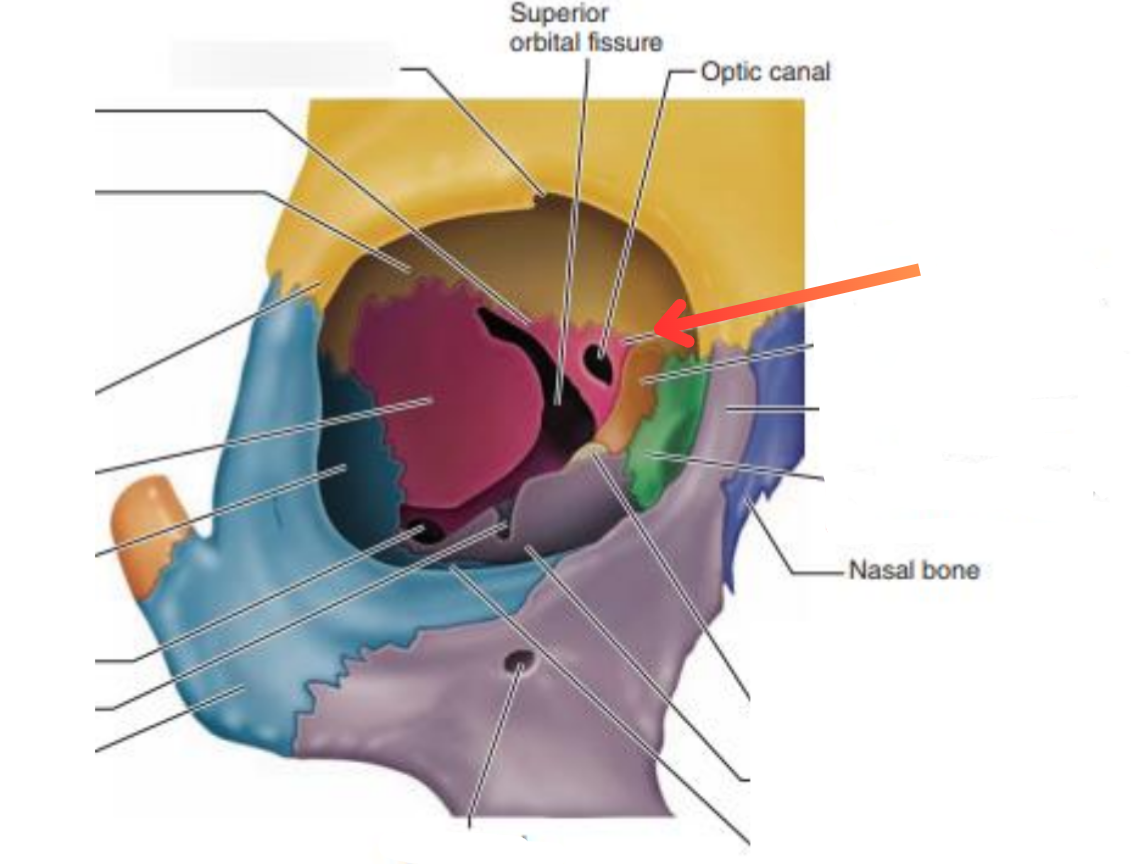
Sphenoid body
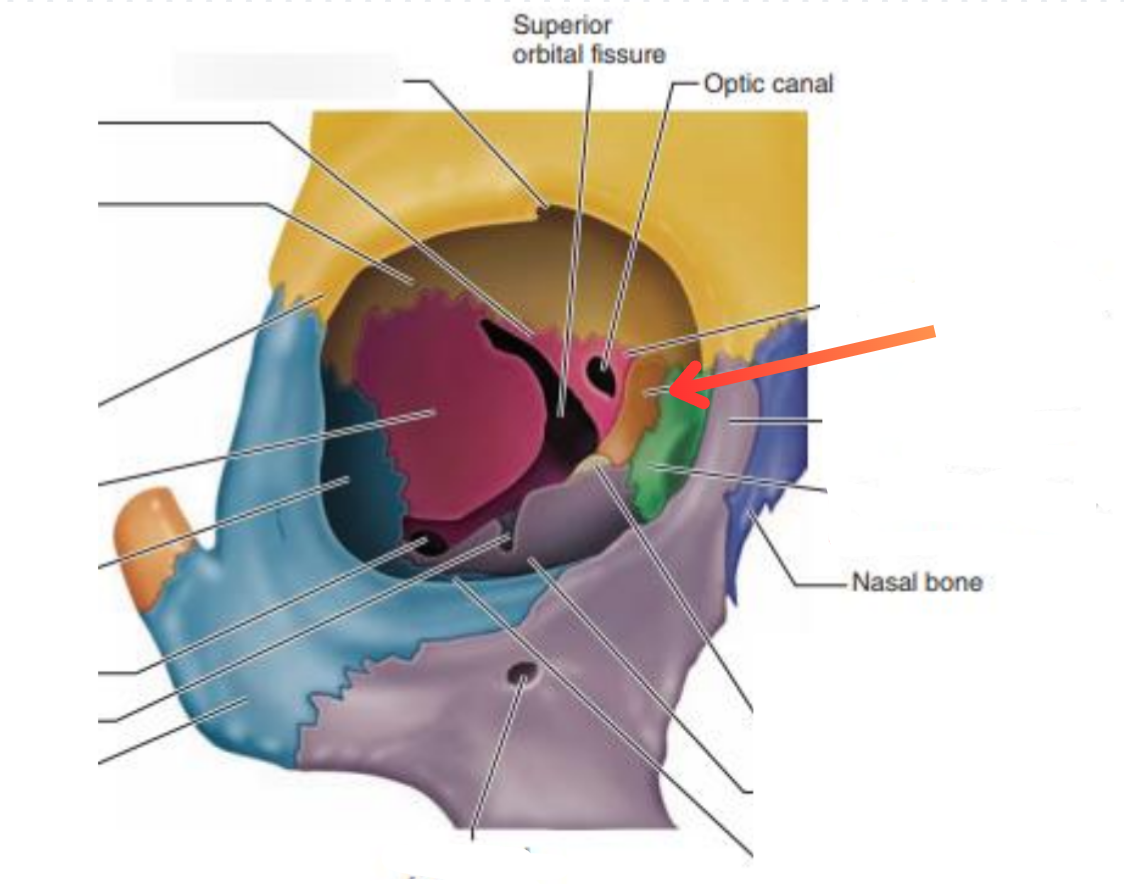
Orbital plate of ethmoid bone
Largest bone of medial wall
Thinnest bone of the medial wall
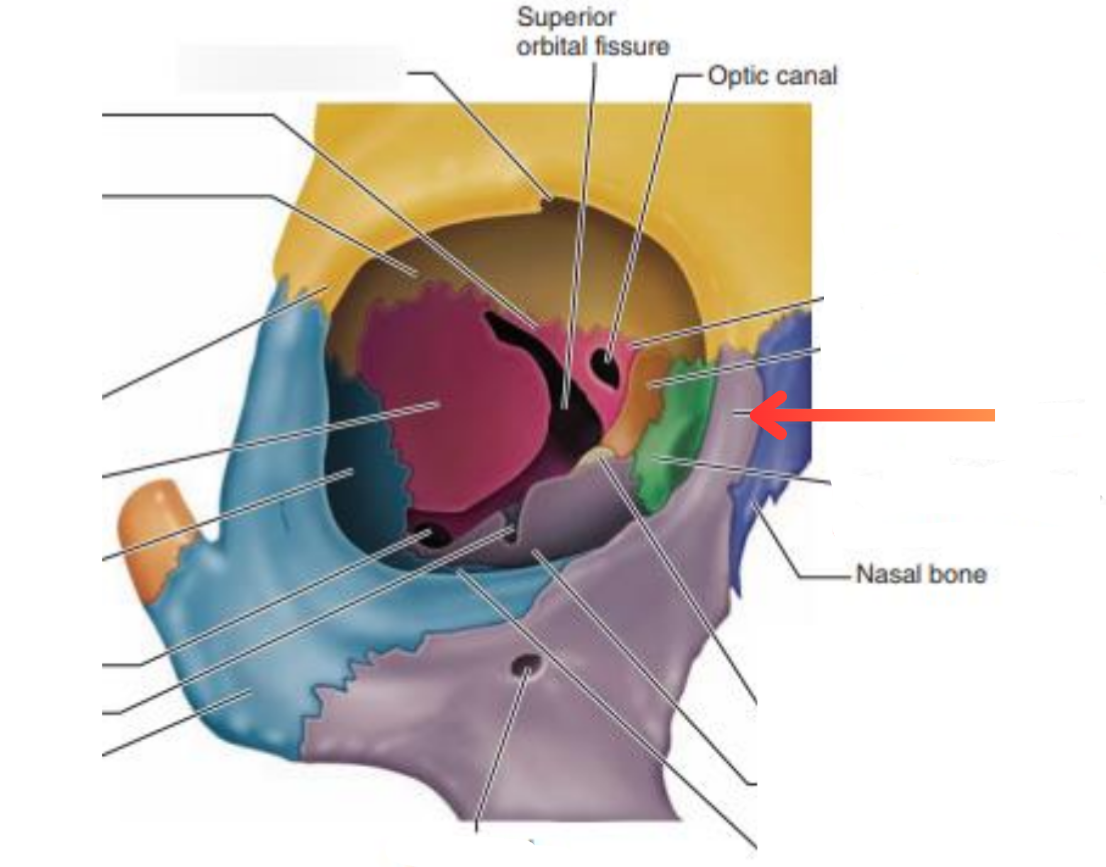
Frontal process of maxilla
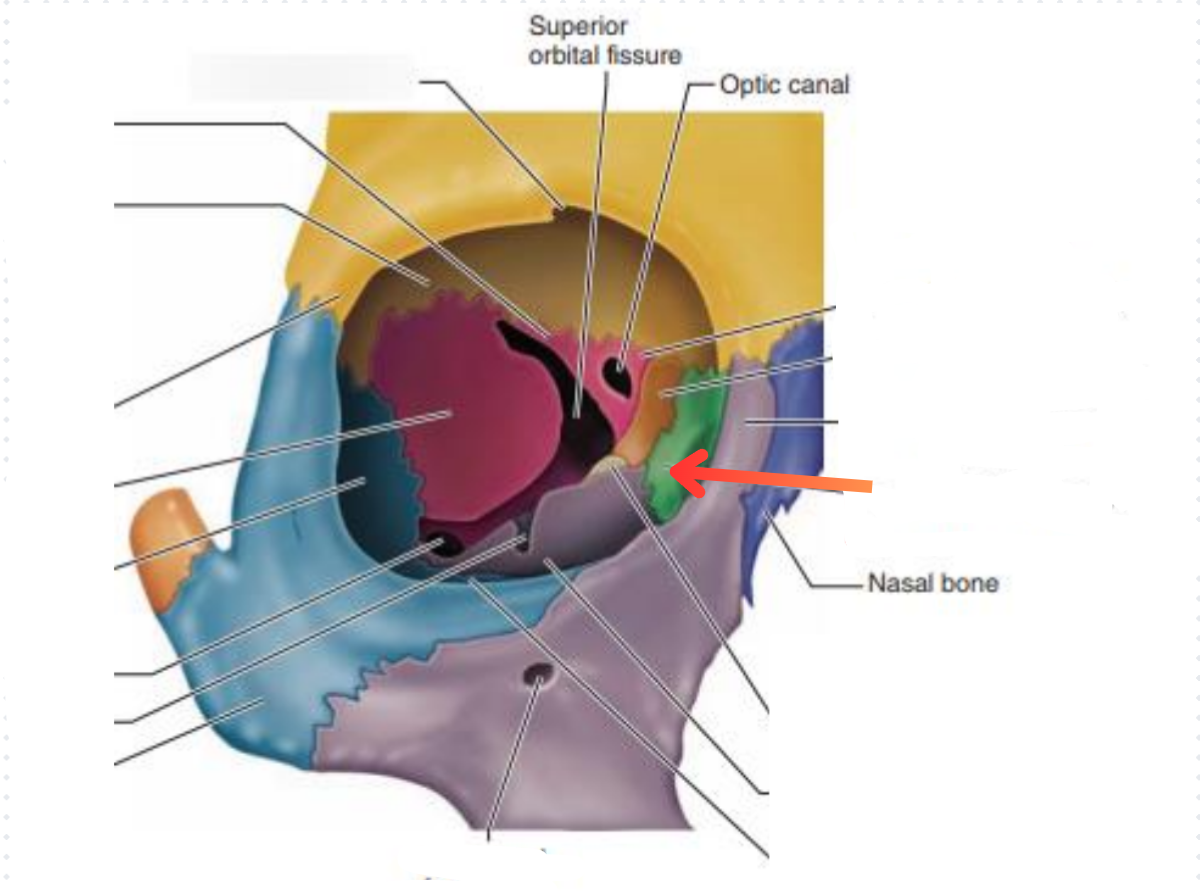
Lacrimal bone
Medial wall of the bony orbit consits of…
Frontal process of the maxilla
Lacrimal bone
Orbital plate of the ethmoid
Body of the sphenoid
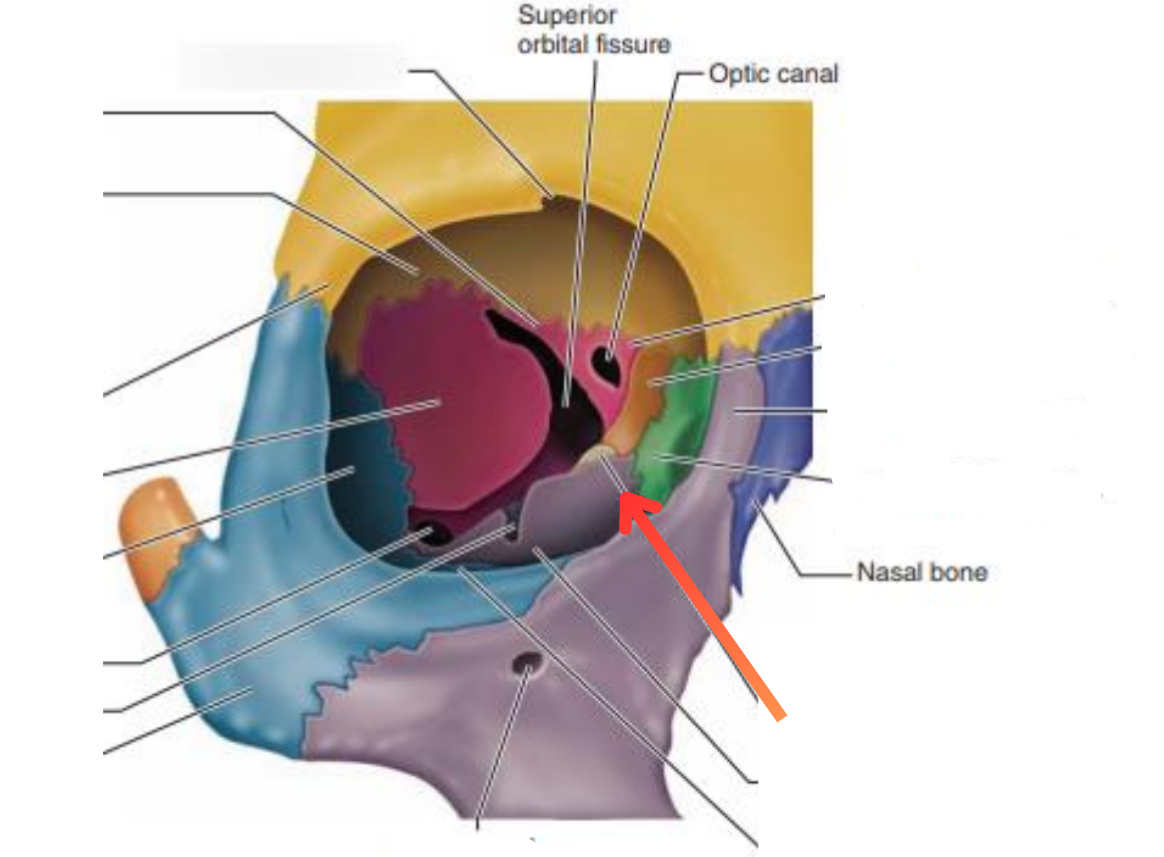
Orbital process of the palatine bone
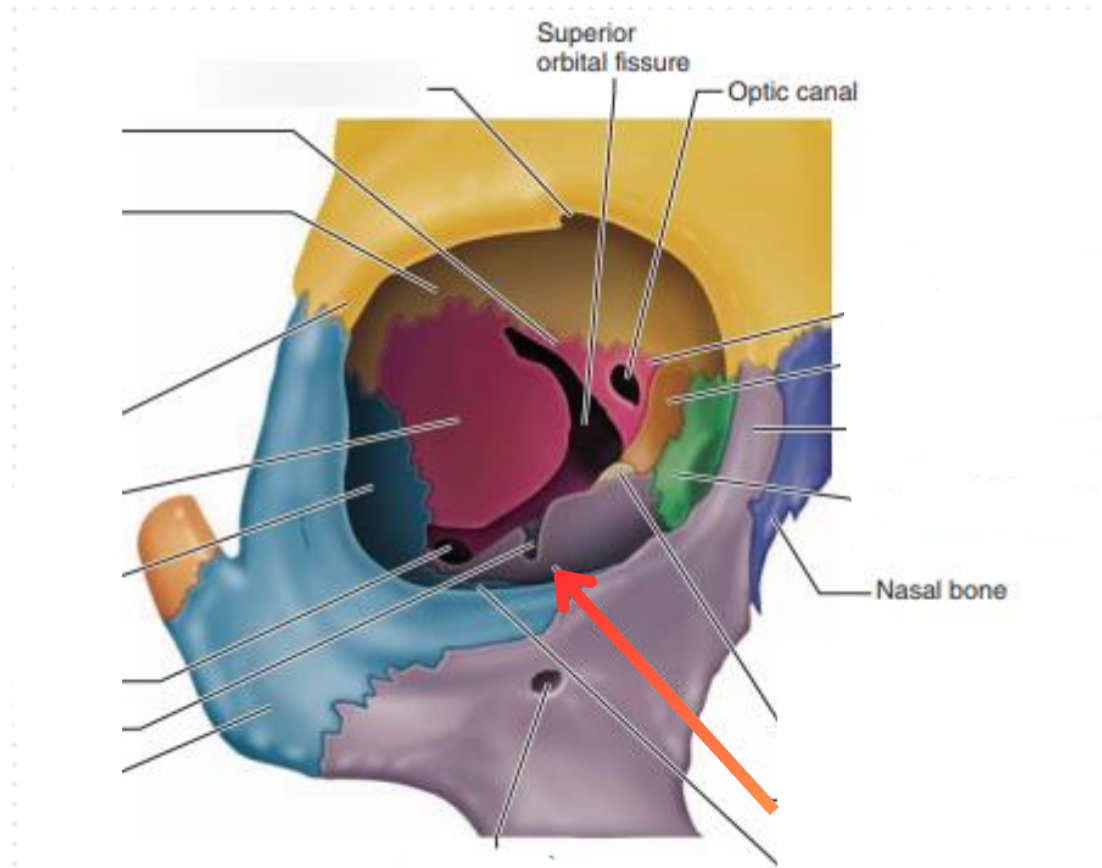
Orbital surface of the maxillary bone
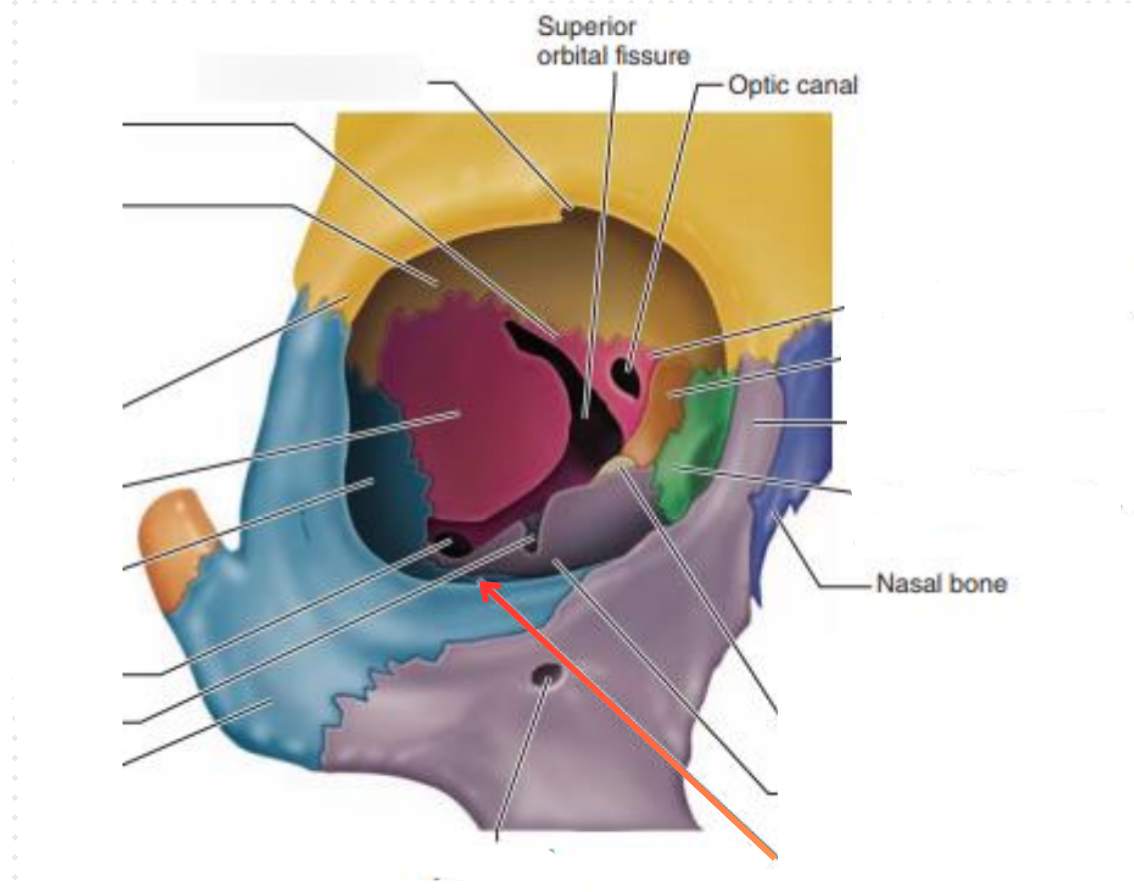
Zygomatic bone
Floor of bony orbit
Shortest of the orbital walls
Formed by:
Orbital plate of the maxilla
Orbital surface of the zygomatic bone
Orbital process of the palatine bone
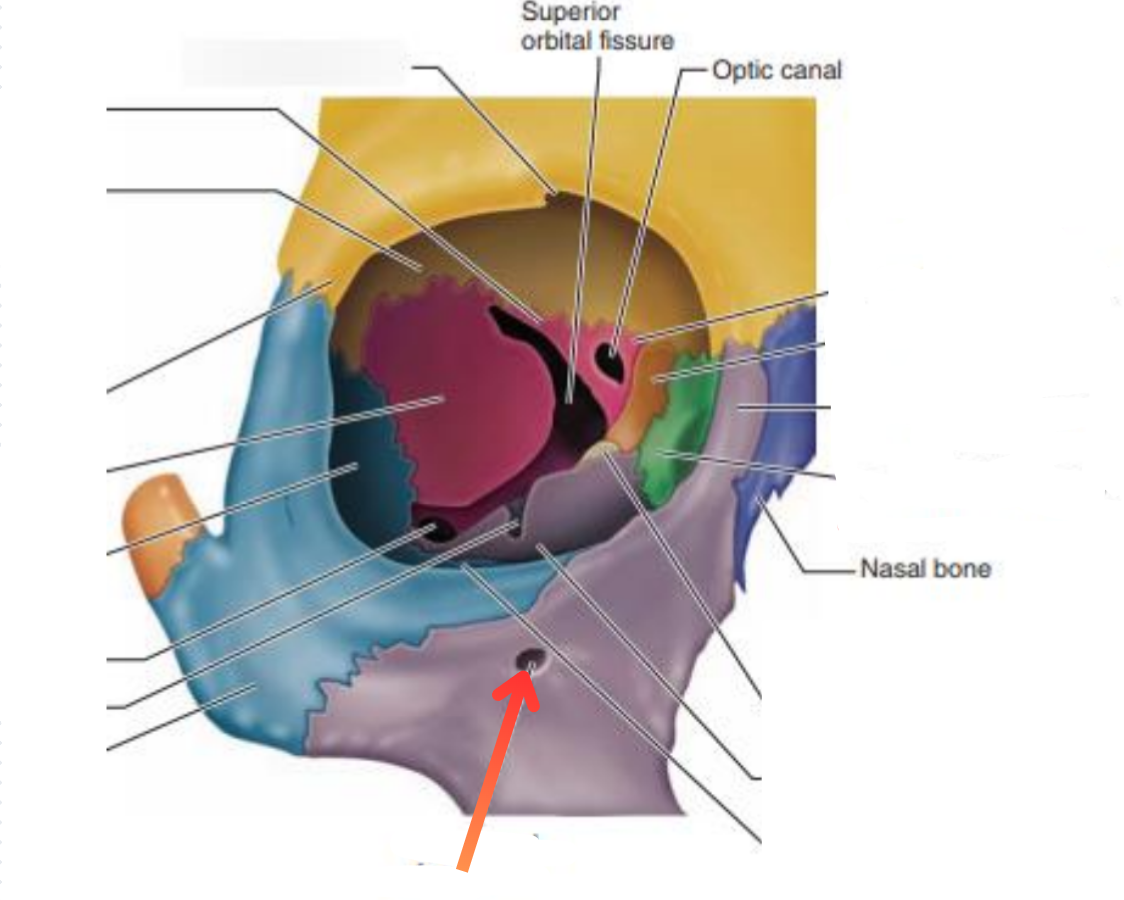
Infraorbital foramen
Transmits the infraorbital vessels and nerve
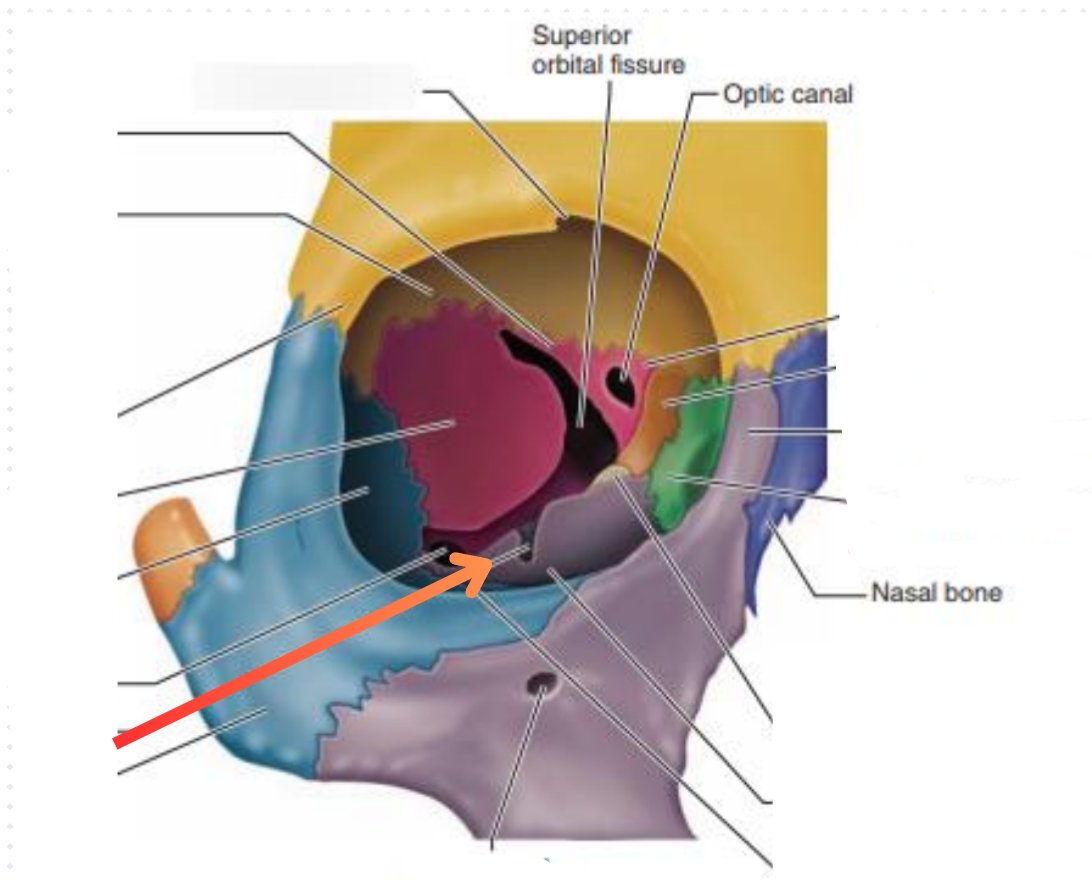
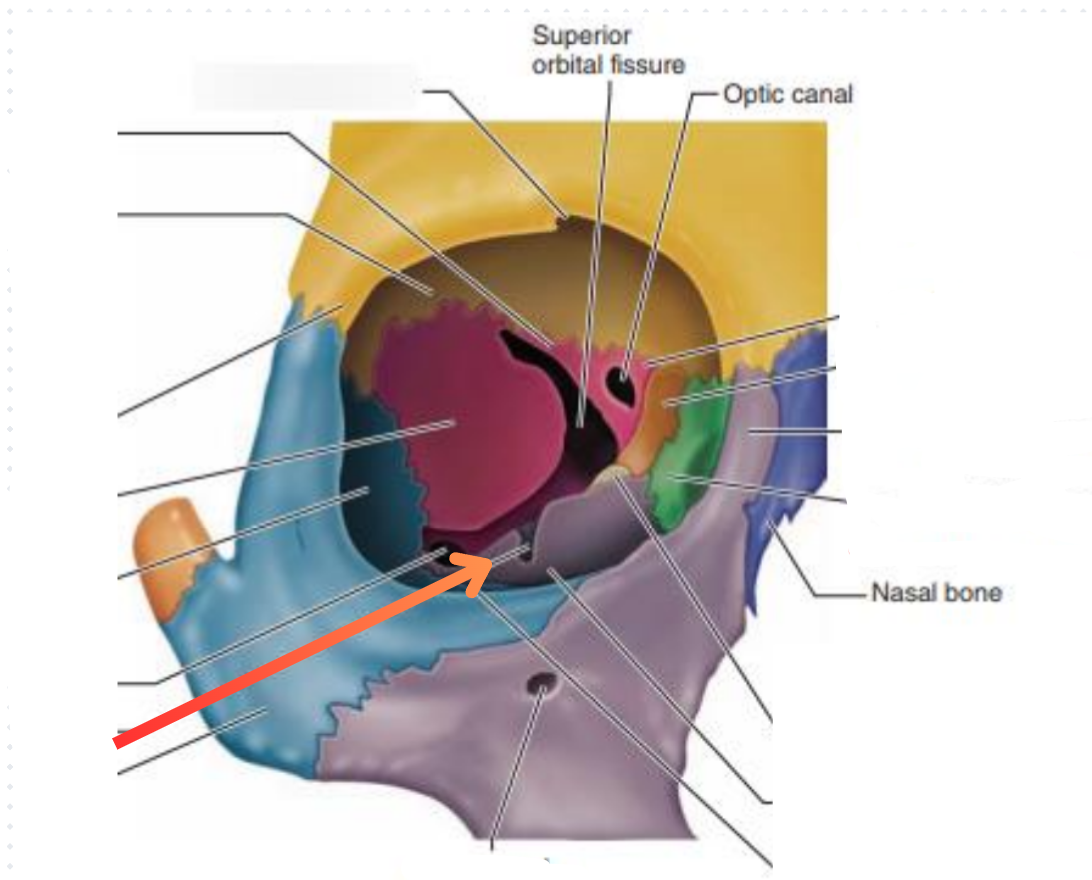
Infraborbital sulcus
Connects sphenomaxillary fissure → infraorbital canal → infraorbital foramen
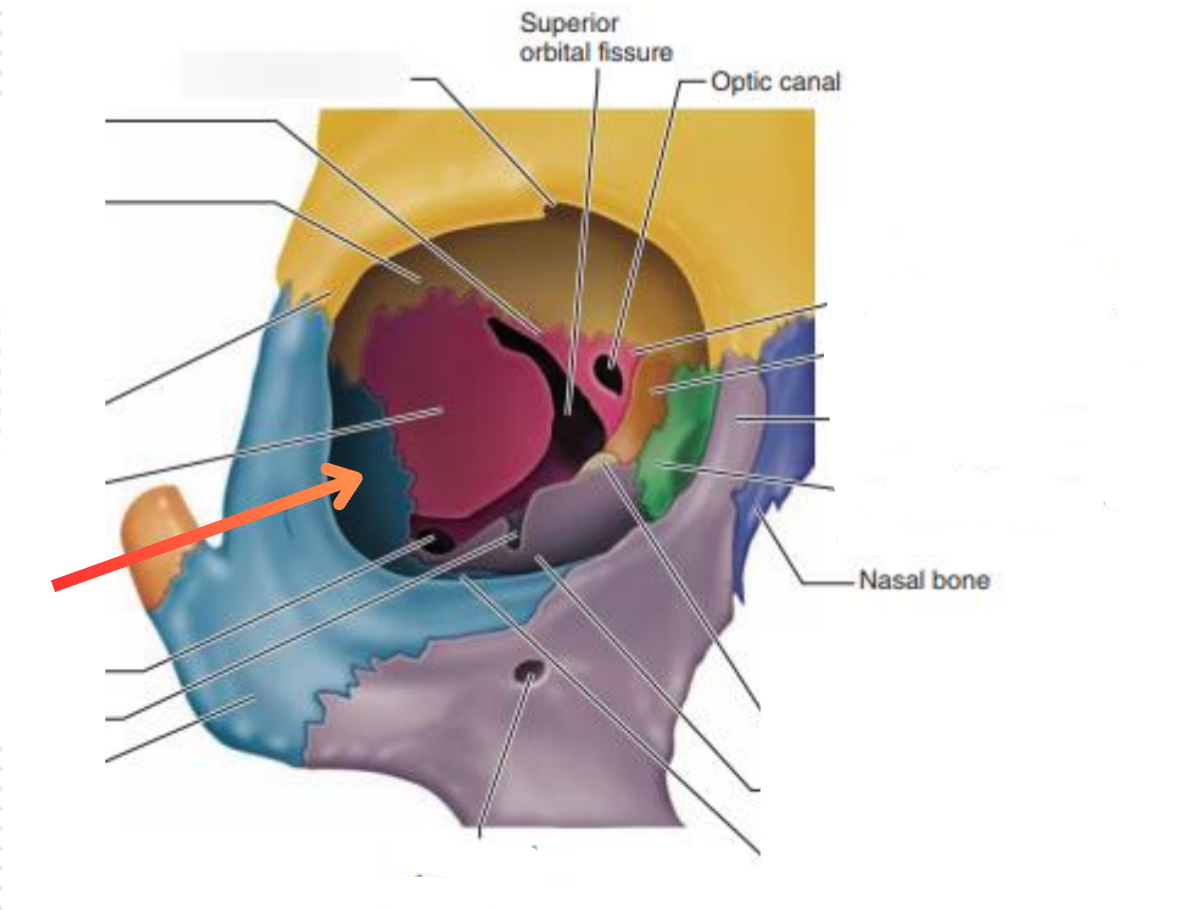
Orbital surface of zygomatic bone
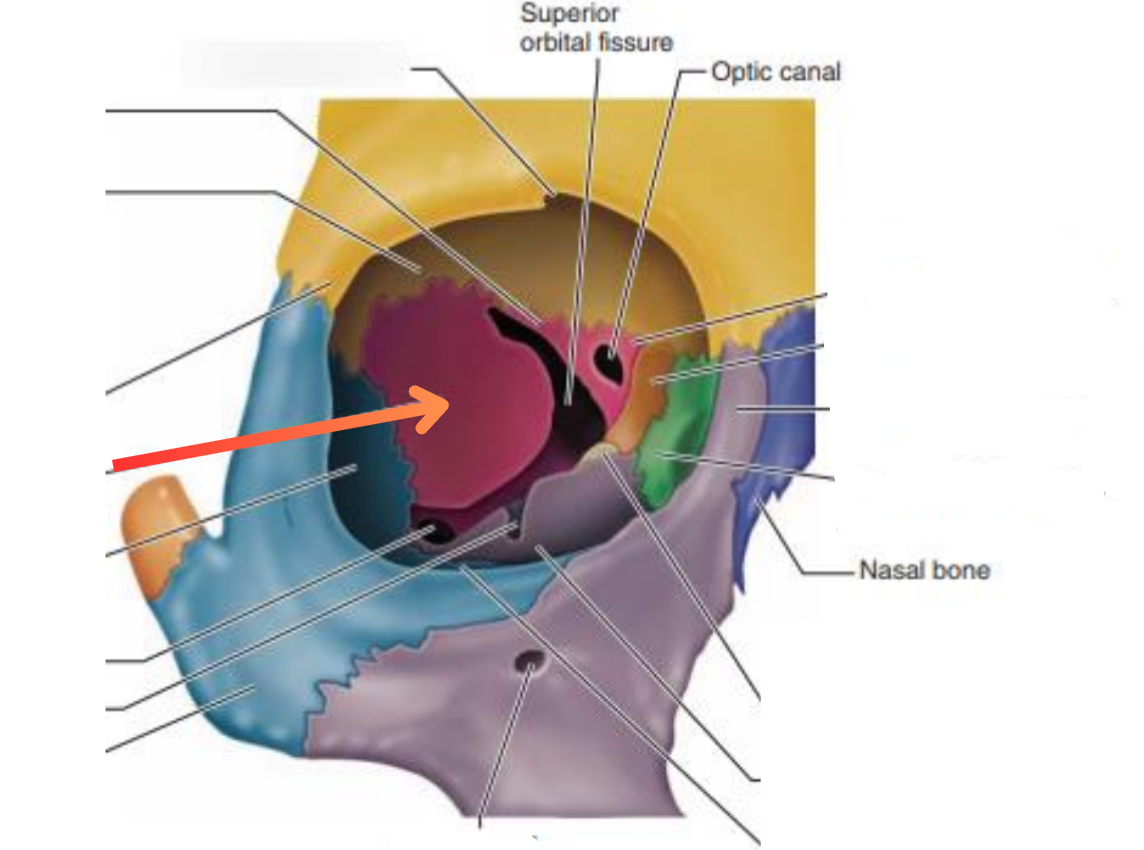
Greater wing of sphenoid bone
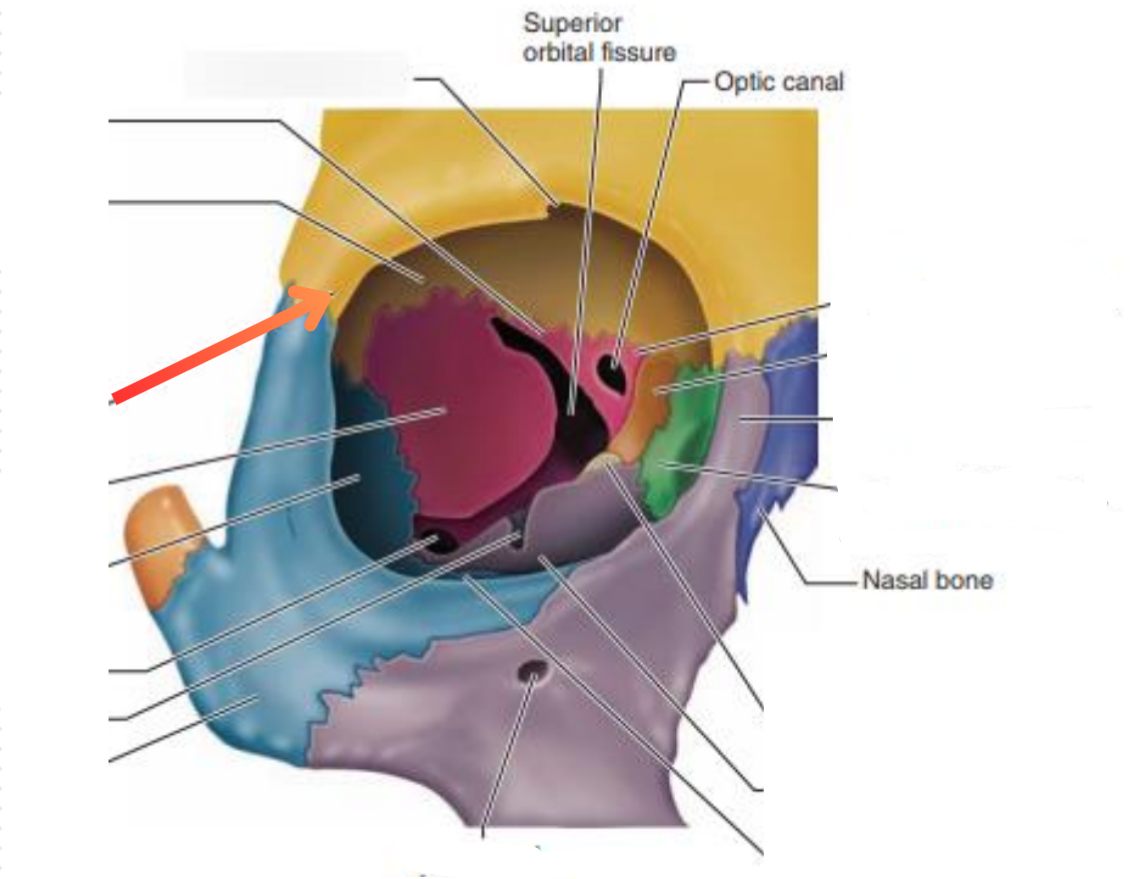
Zygomatic process of frontal bone
Lateral orbital tubercle (Of Whitnall)
Small elevation on zygomatic bone, behind lateral orbital margin
Attaches:
Check ligament of the lateral rectus muscle
Suspensory ligament of the eyeball
Aponeurosis of the levator palpebrae superiori
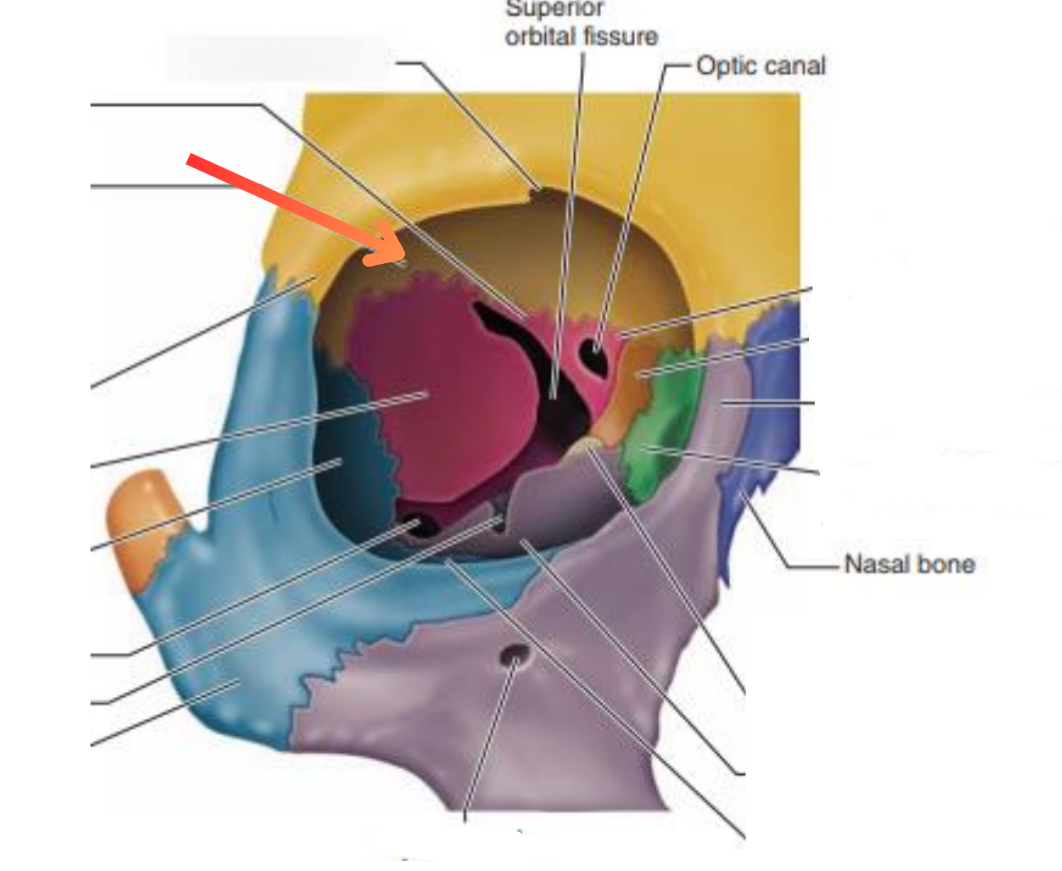
Orbital plate of frontal bone
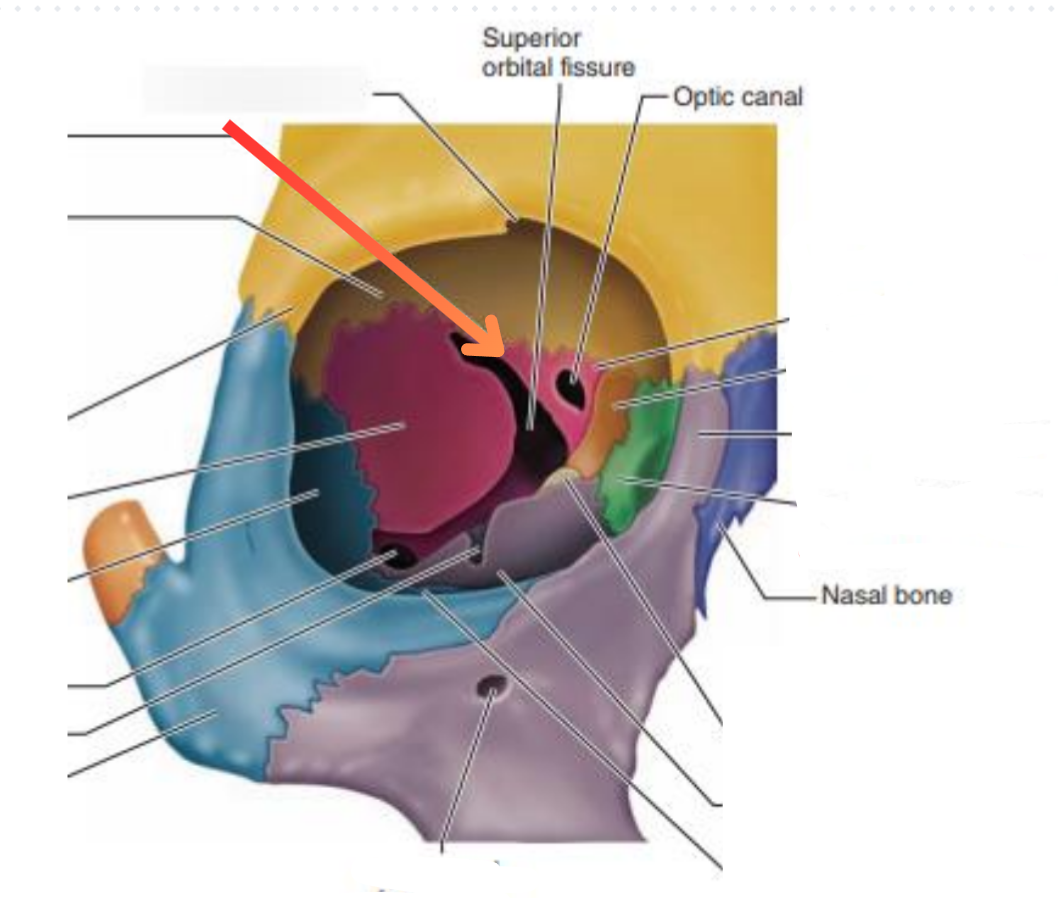
Lesser wing of sphenoid bone
Roof of orbit
Concave anteriorly
Flatter posteriorly
The orbital plate of the frontal bone seperates….
The orbit from the anterior cranial fossa
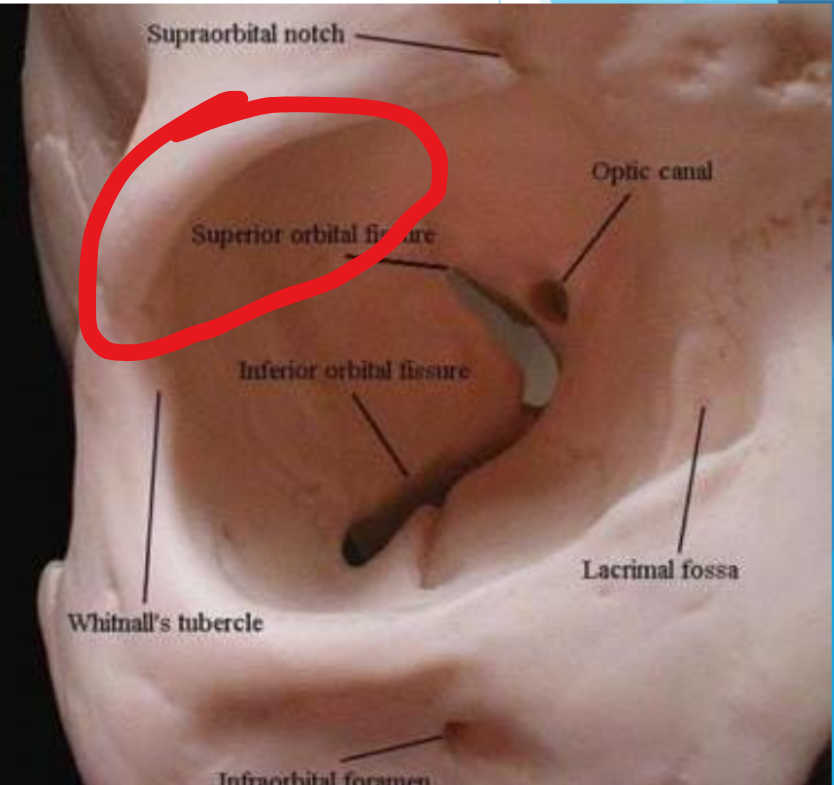
Lacrimal fossa of frontal bone
Where the lacrimal gland is located
Not the same as lacrimal fossa of the lacrimal gland, where the lacirmal sack is located
Lacrimal fossa
Contains the lacrimal sack
Helps with draining of tears
Not the same as lacrimal fossa of frontal bone
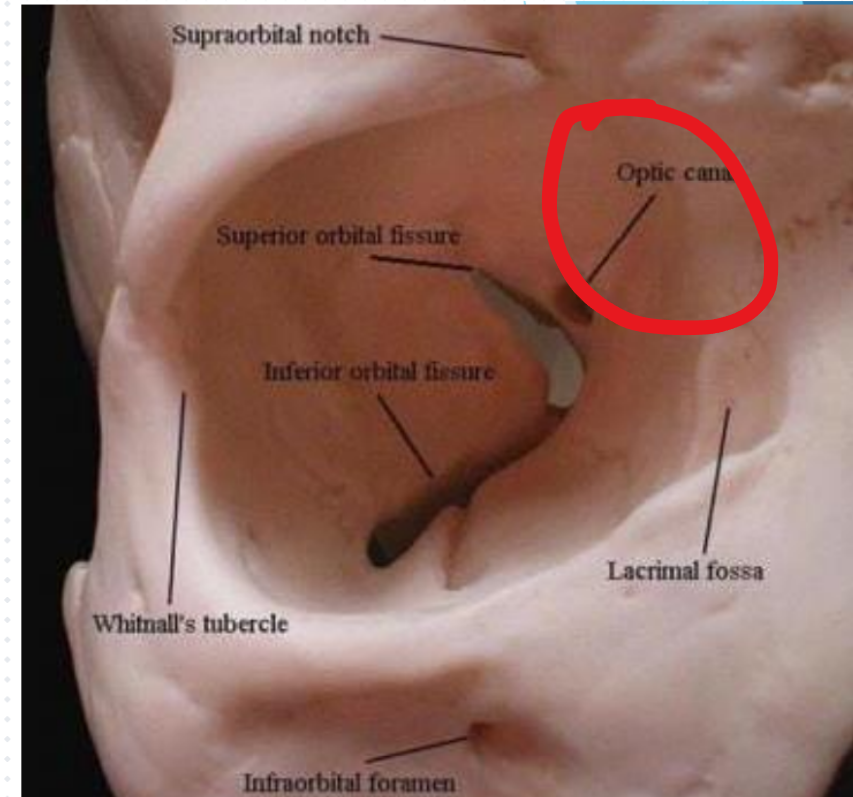
What attaches here?
The trochlea
U-shaped piece of cartilage
Tendon of the superior oblique muscle passes through here
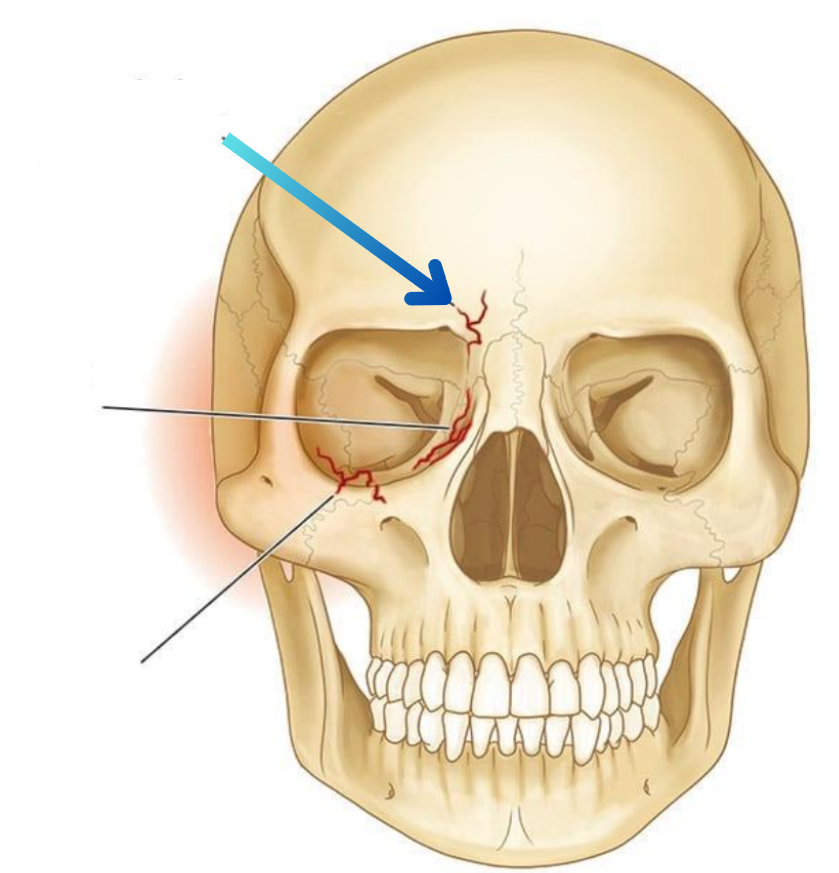
Orbital rim fracture
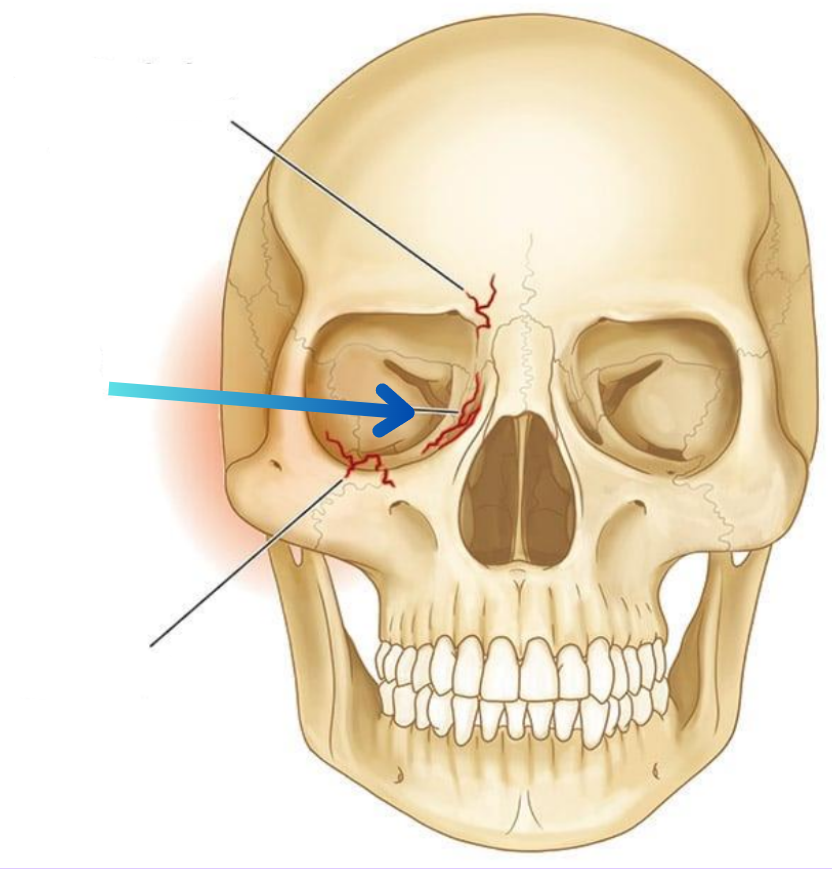
Blowout fracture
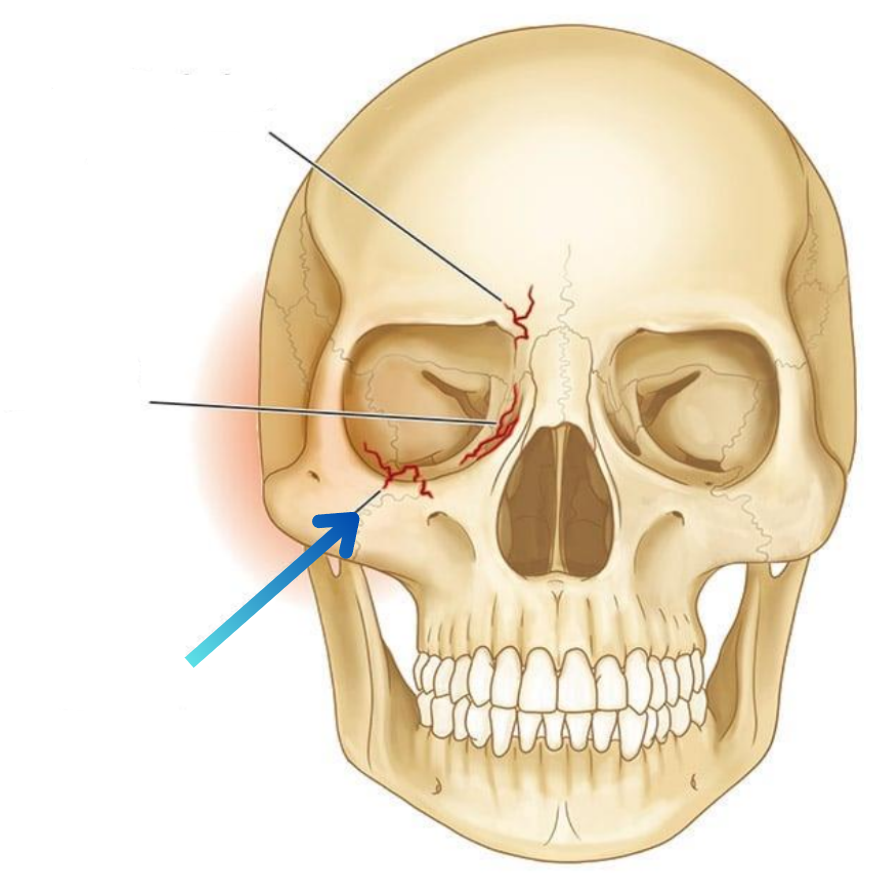
Orbital floor fracture
Optic canal
Transmits optic nerve and ophthalmic artery
Connects orbit to middle cranial fossa
Optic nerve glioma (Meningioma)
May lead to unilateral enlargement of optic canal
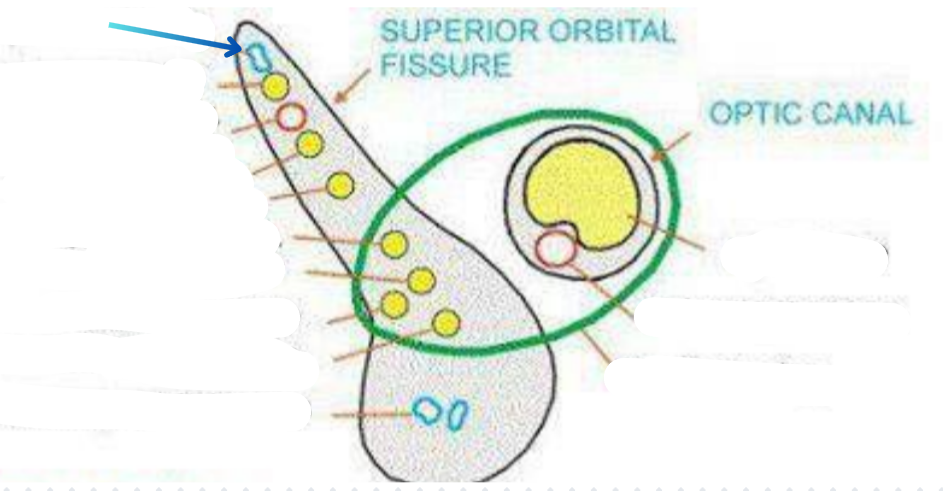
Superior ophthalmic vein
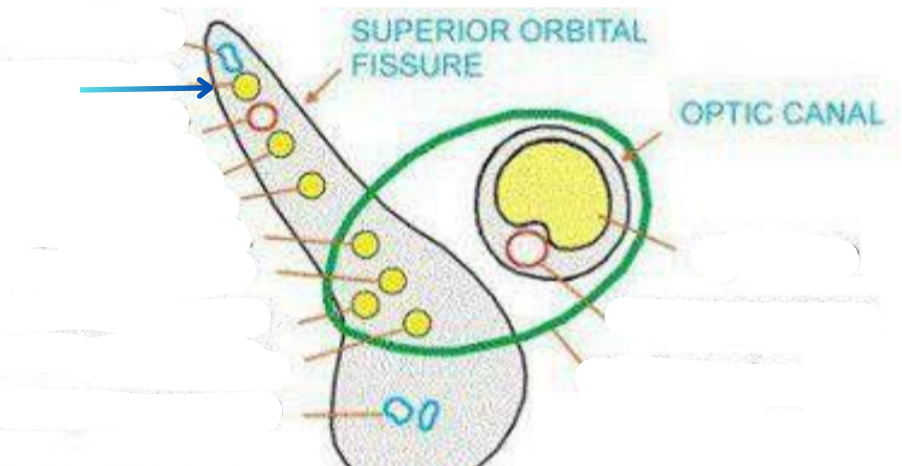
Lacrimal nerve
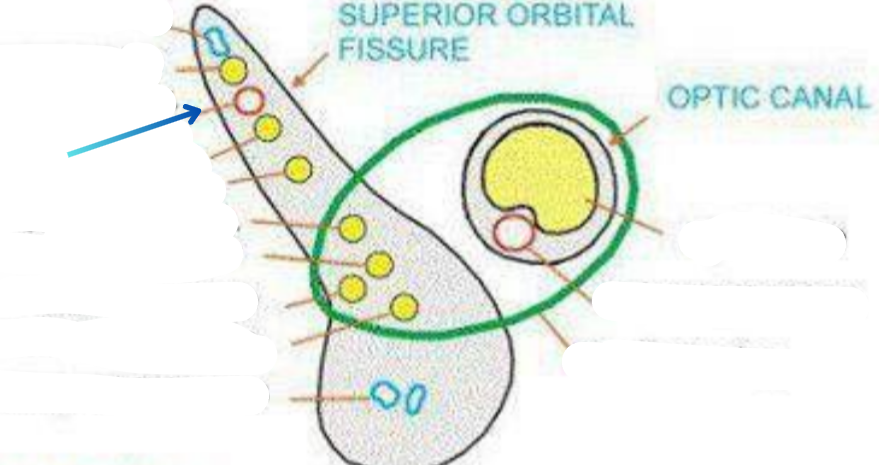
Recurrent meningeal br. of ophtalmic artery
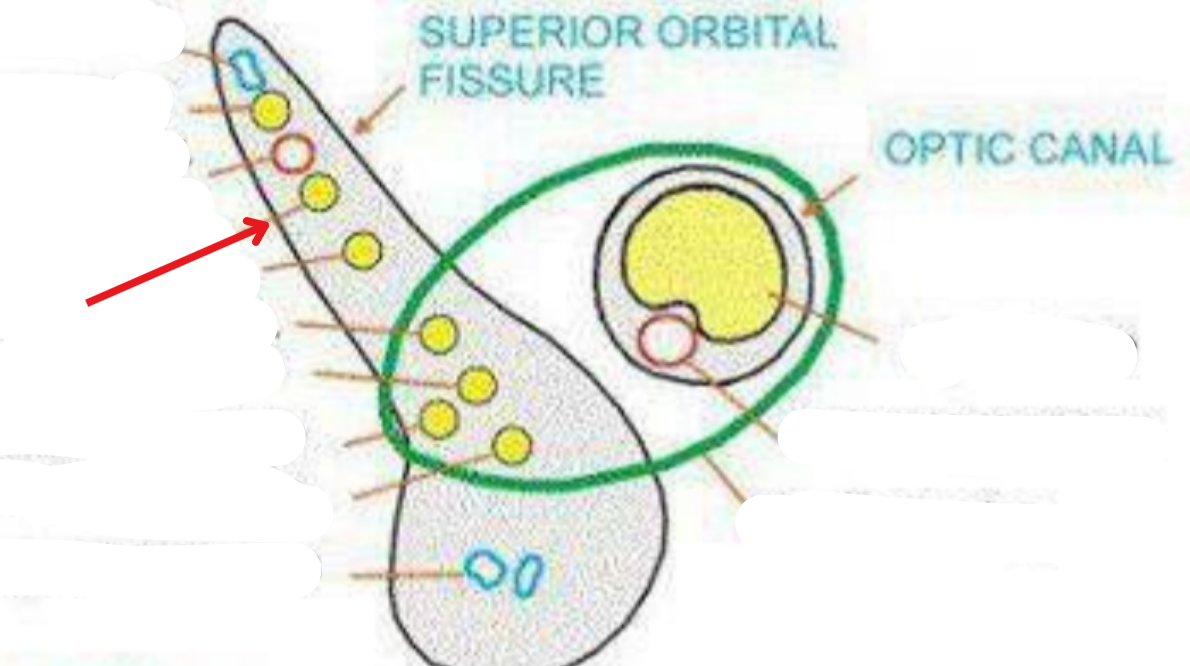
Frontal nerve
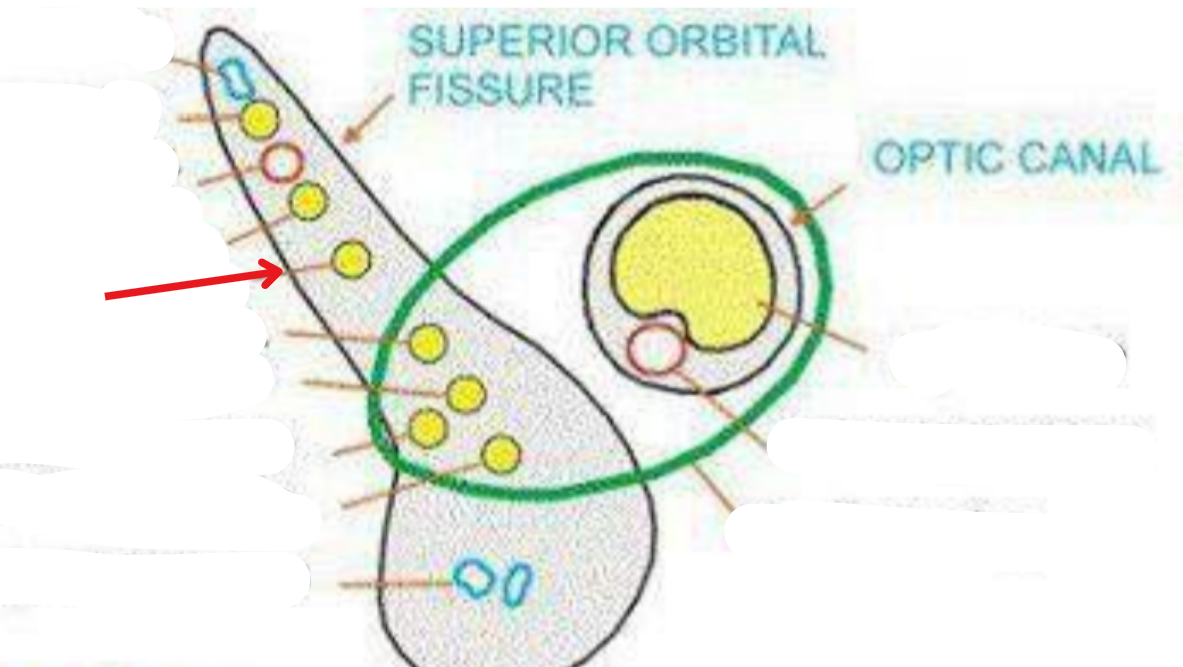
Trochlear nerve
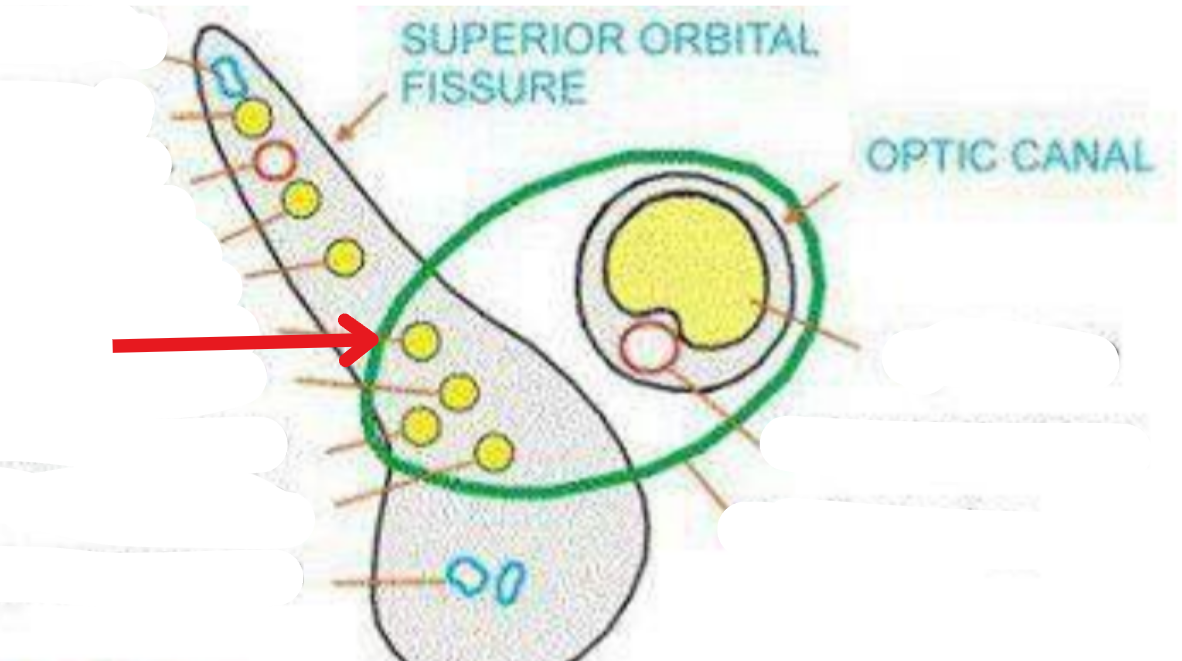
Superior division of oculomotor nerve
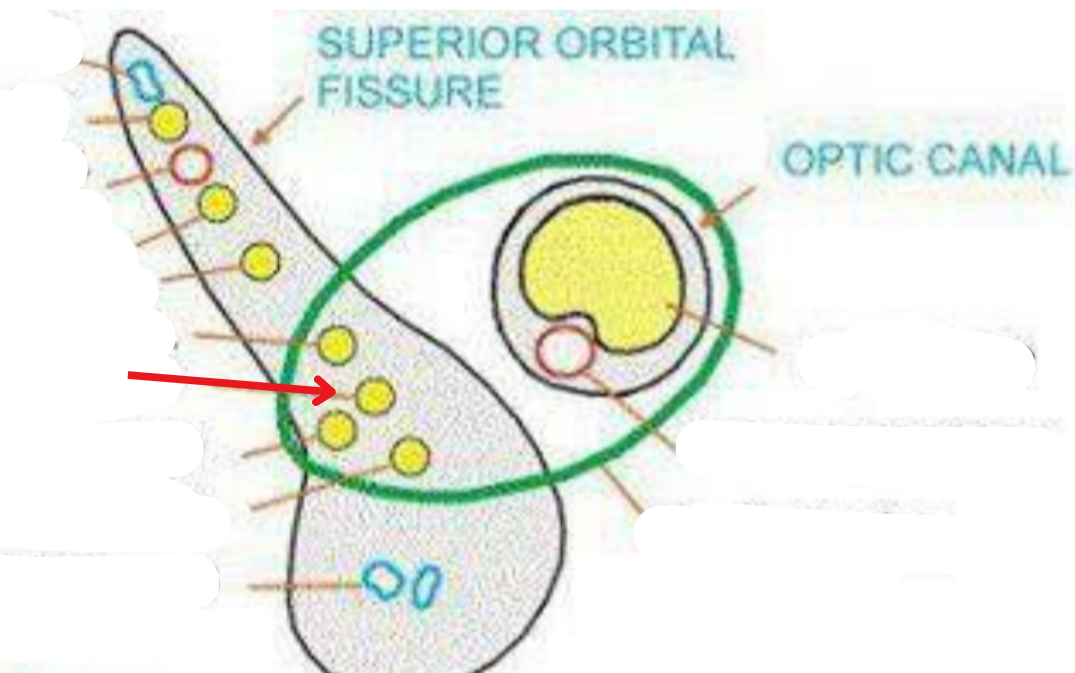
Nasocilliary nerve
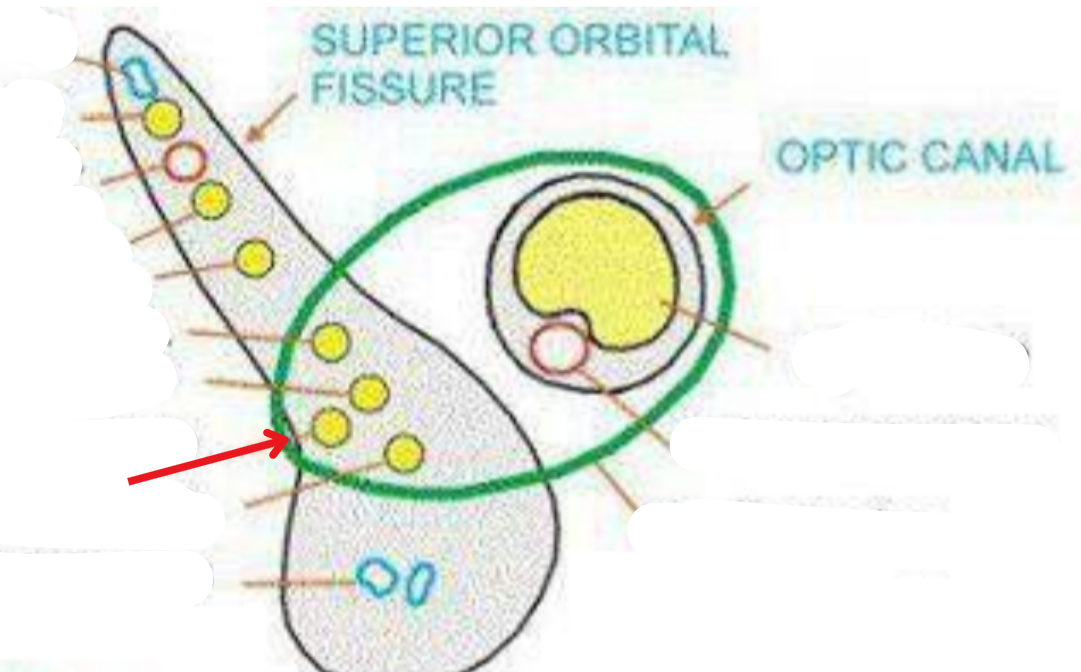
Abducent nerve
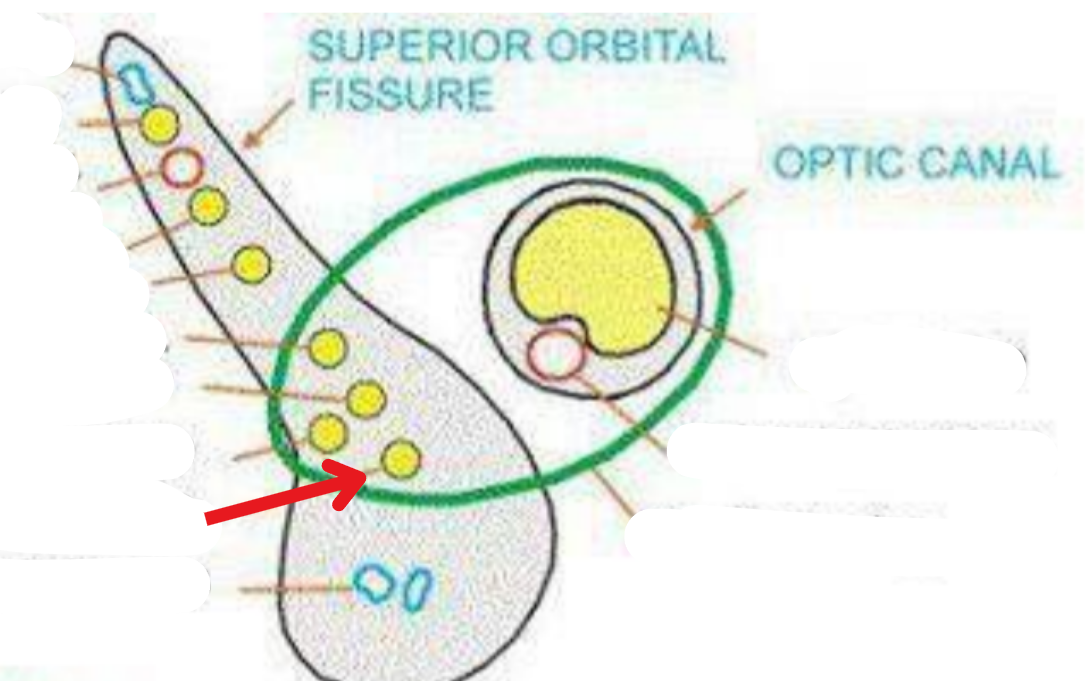
Inferior division of oculomotor nerve
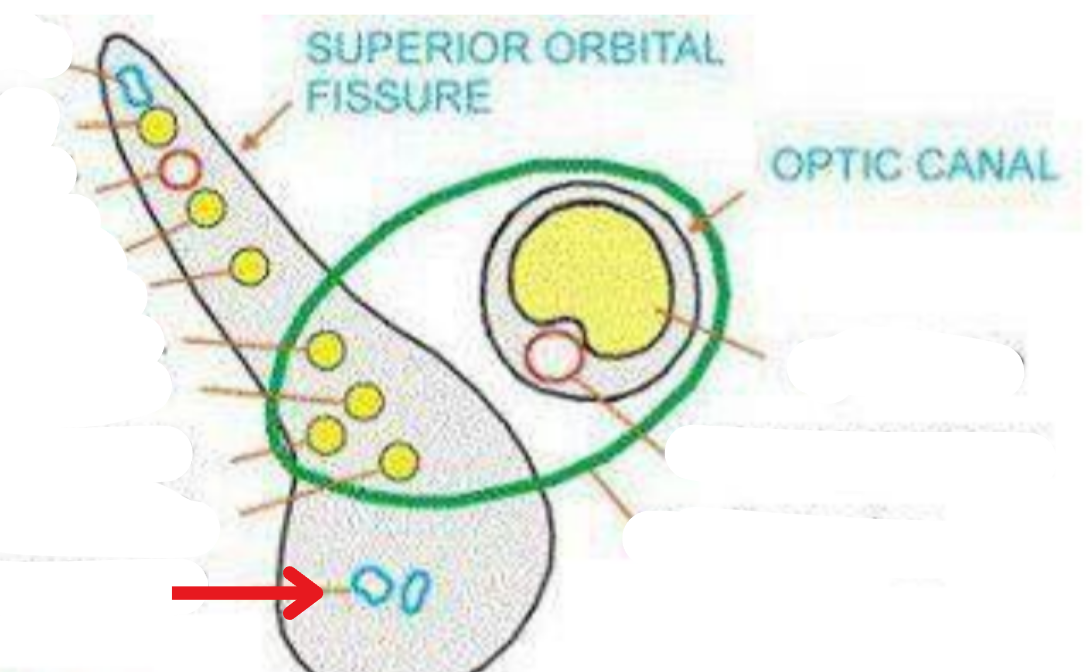
Inferior ophthalmic veins
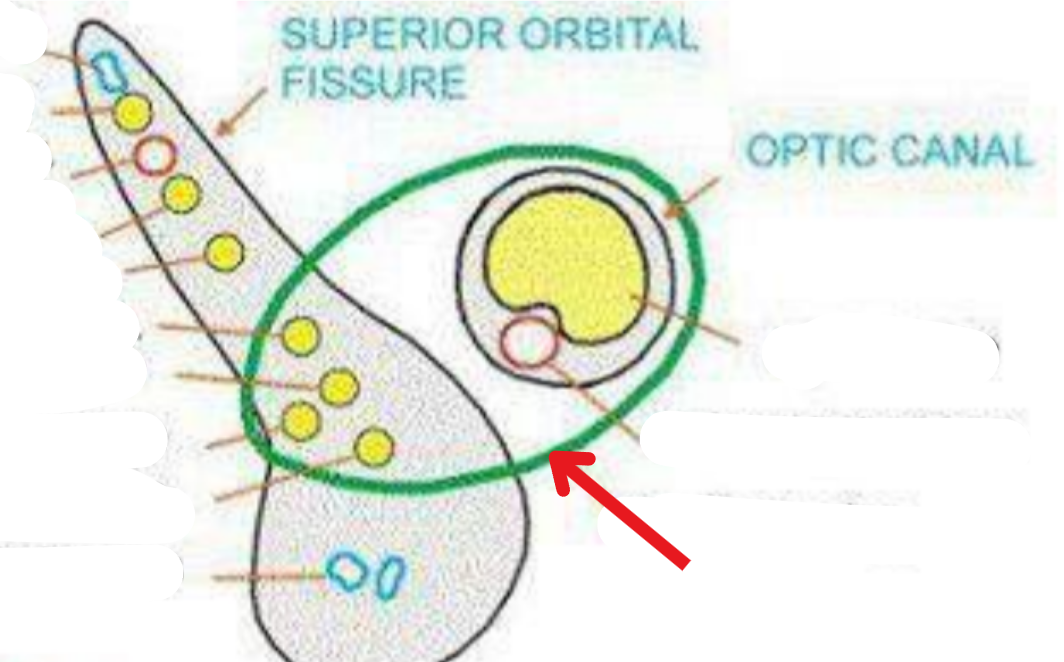
Common tendinous ring
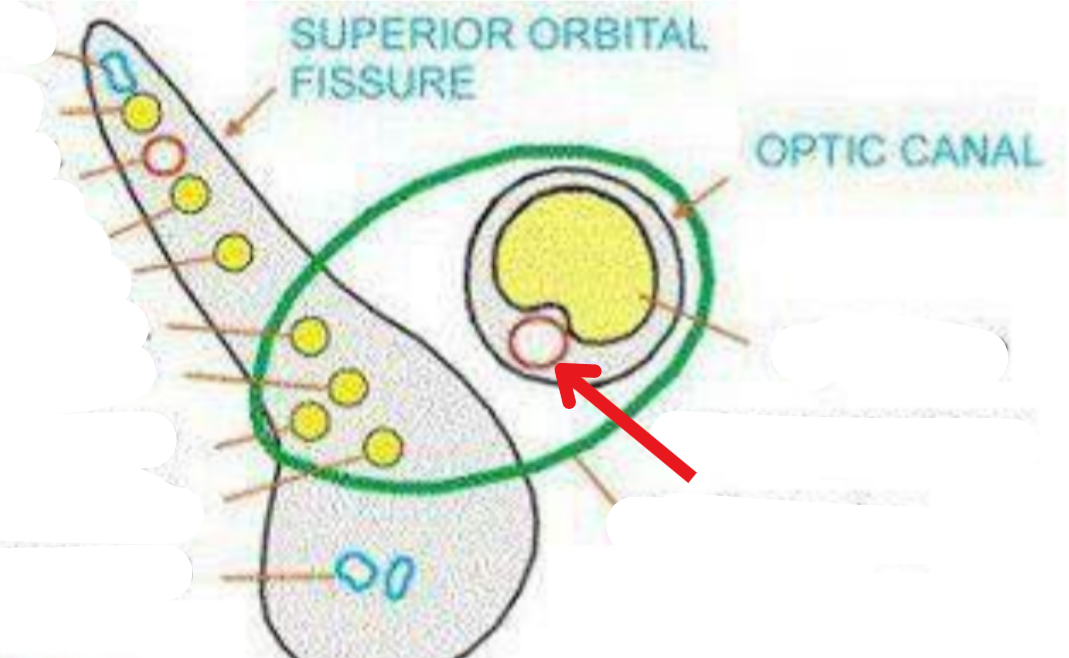
Ophthalmic atery
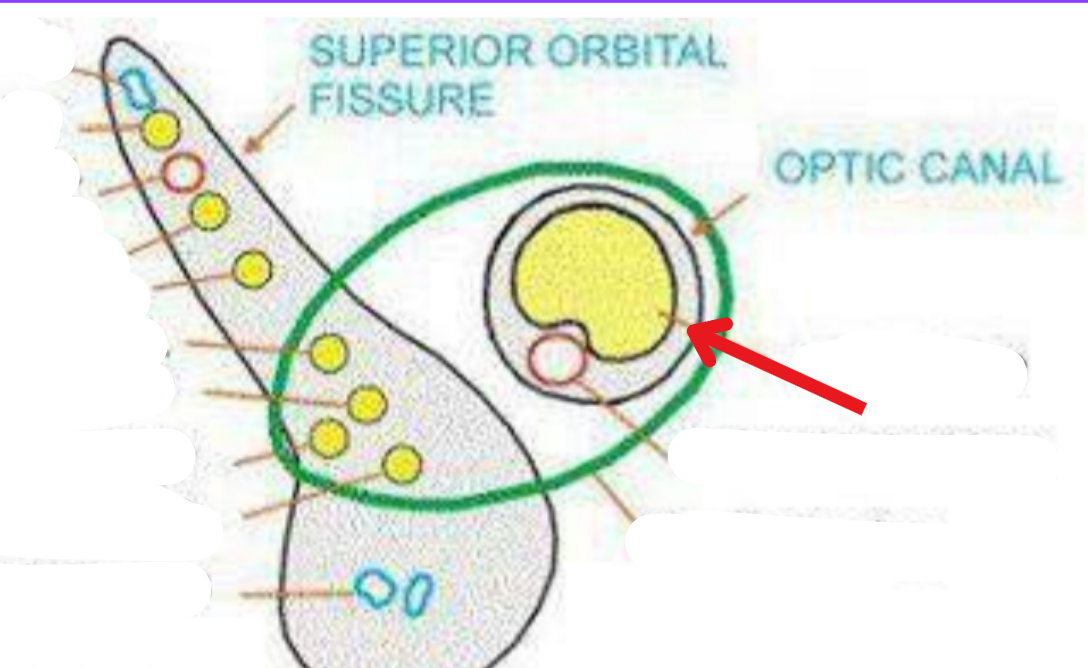
Optic nerve
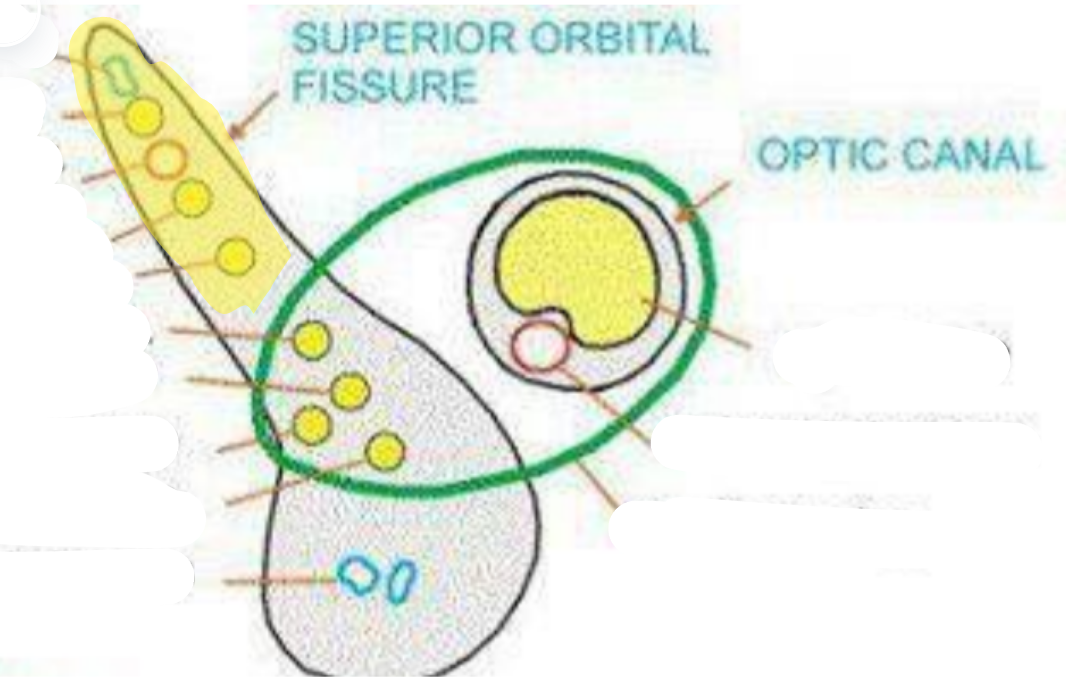
Upper part of superior orbital fissure
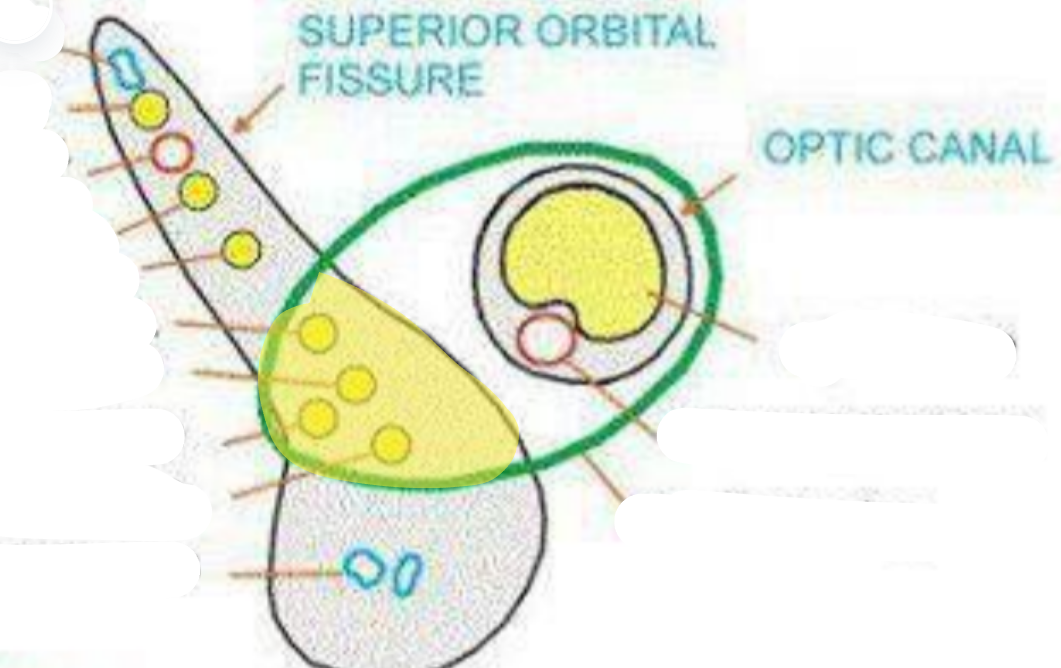
Middle part of superior orbital fissure
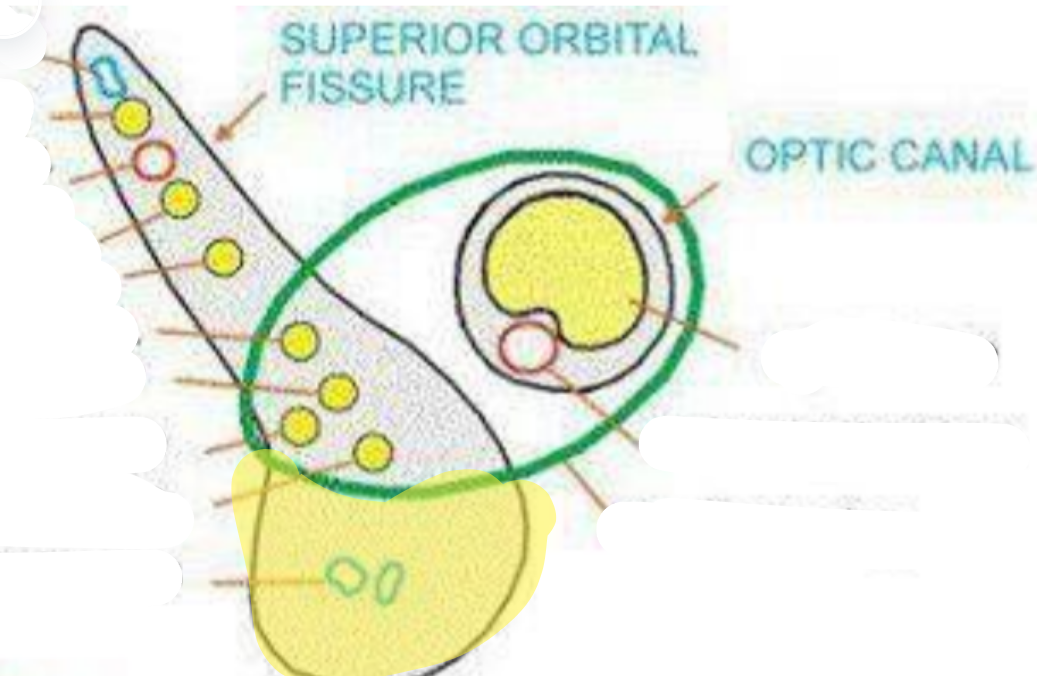
Lower part of superior orbital fissure
Superior orbital fissure
Gap between greater and lesser wings of sphenoid
Lateral to optic canal
Divided into upper, middle, and lower parts by common tendinous ring
Inferior orbital fissure
Between floor of the orbit and the lateral wall
Structures exit through the infra orbital foramen
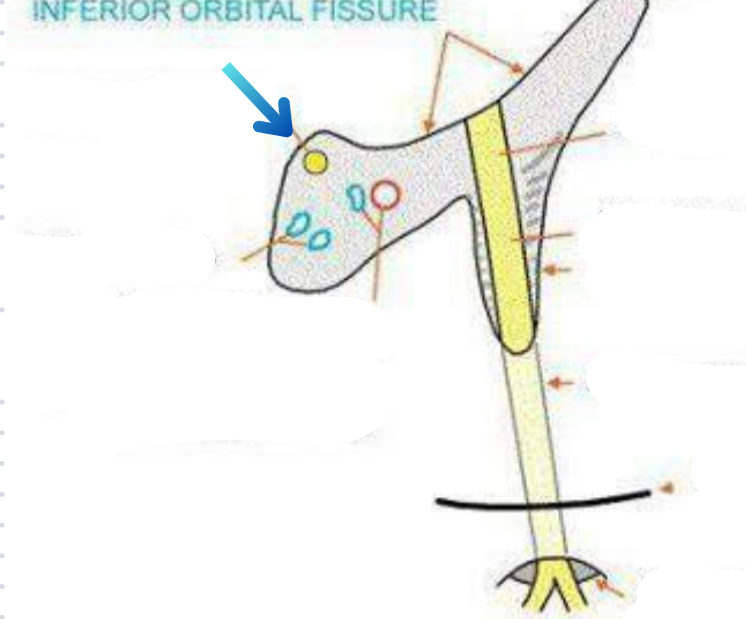
Zygomatic nerve
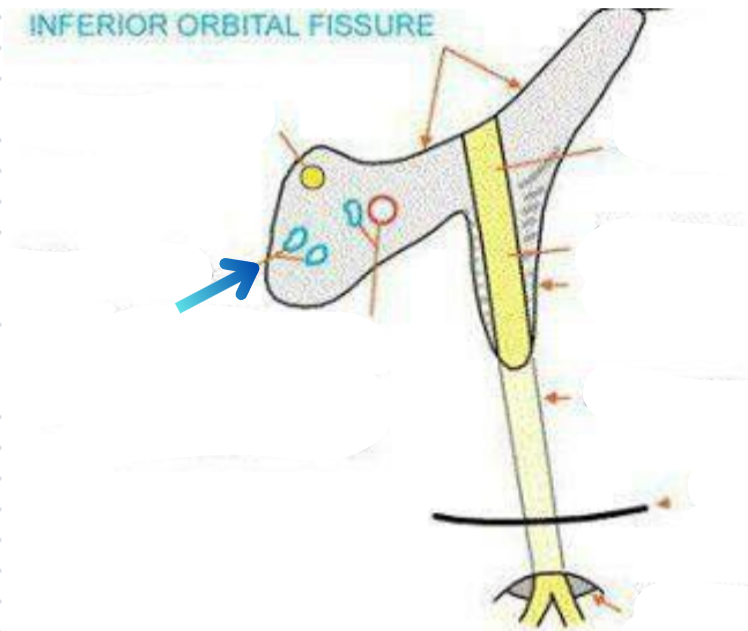
Emissary veins
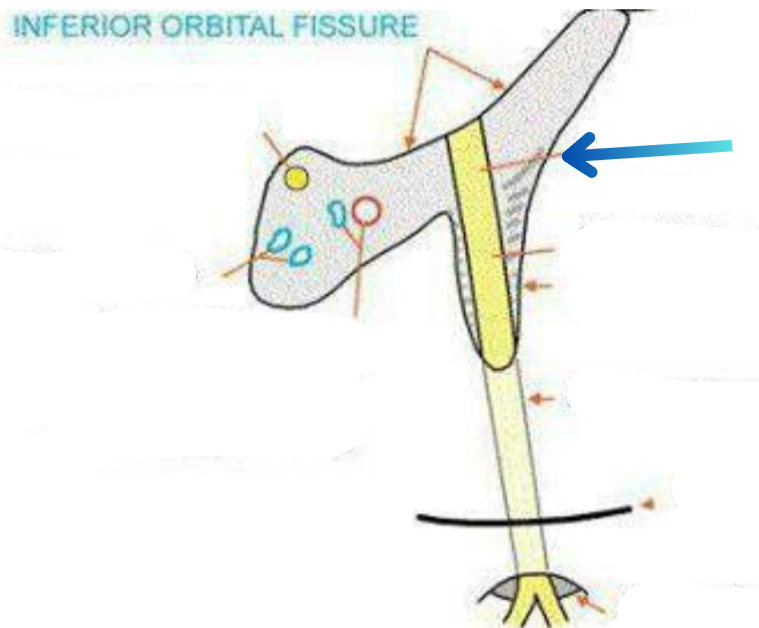
Maxillary nerve
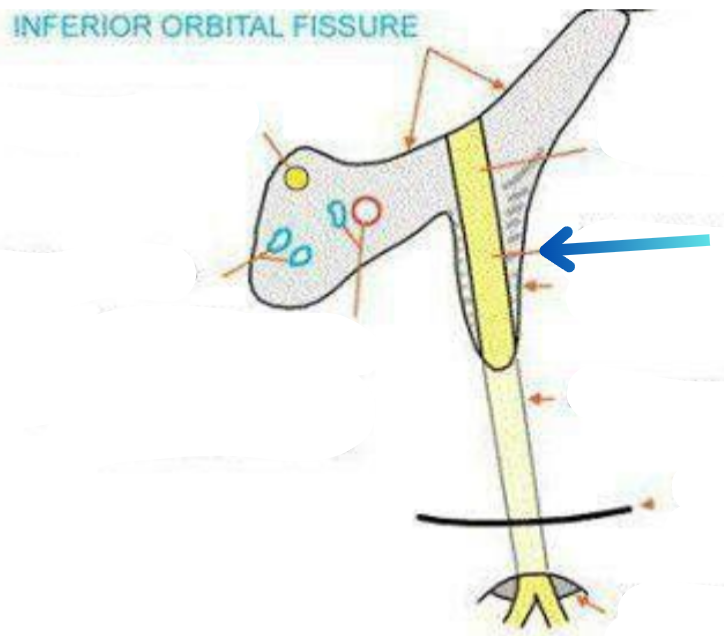
Infraorbital nerve (V2, maxillary division)
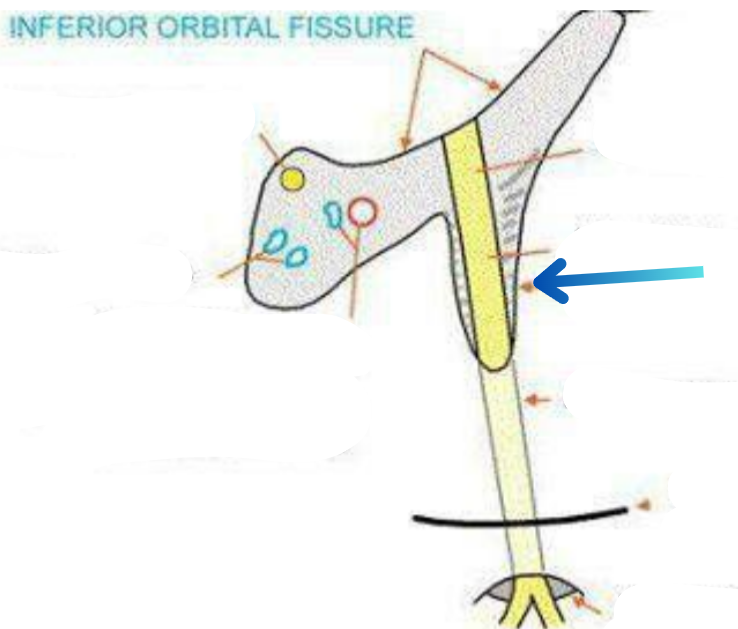
Infraorbital grooves
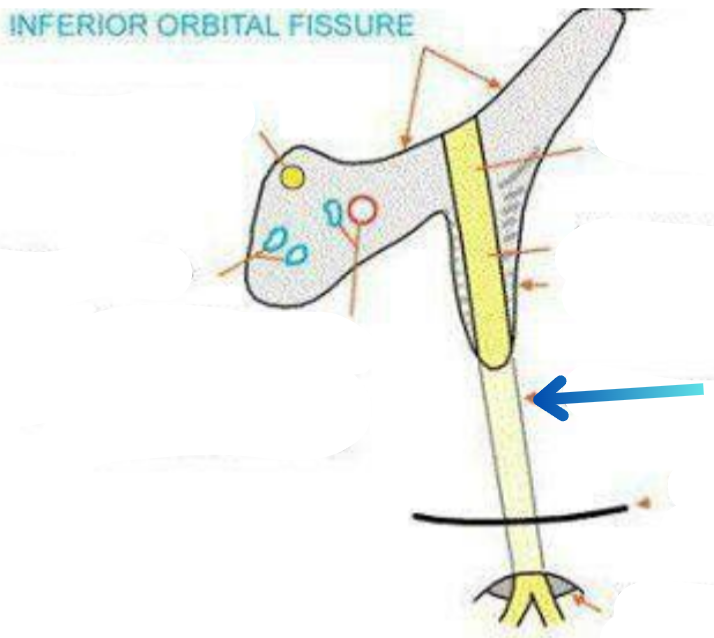
Infraorbital canal
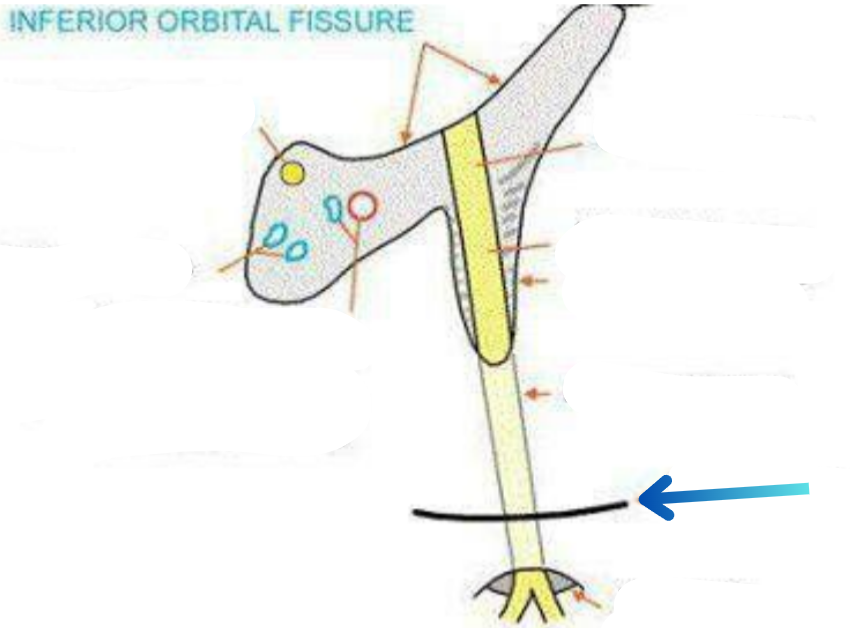
Lower margin of orbit
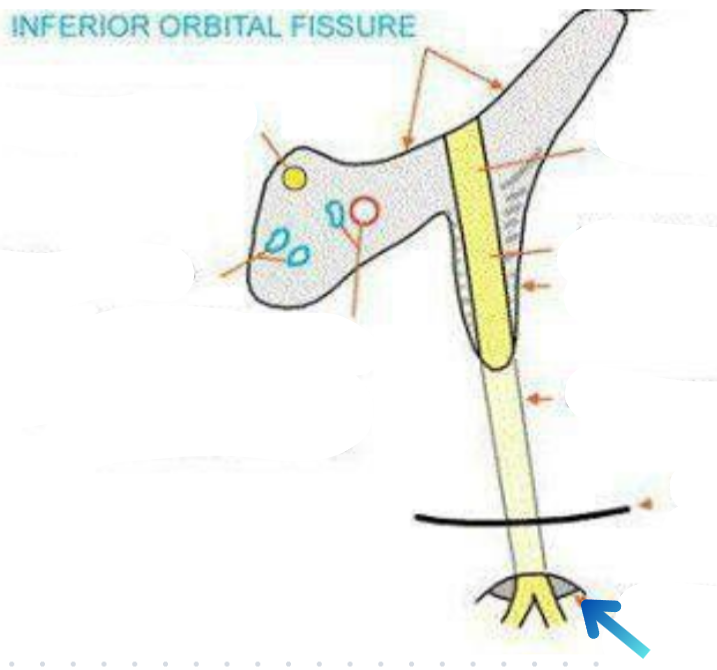
Infraorbital foramen
Infraorbital artery + vein, maxillary and V2 nerve, and infraorbital nerve exit through here
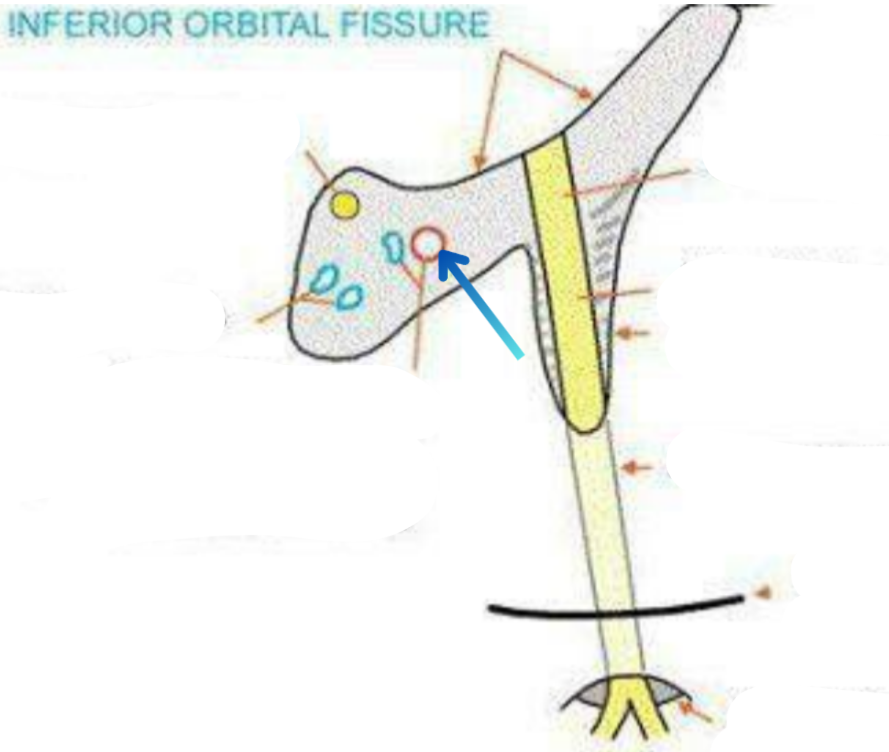
Infraorbital artery
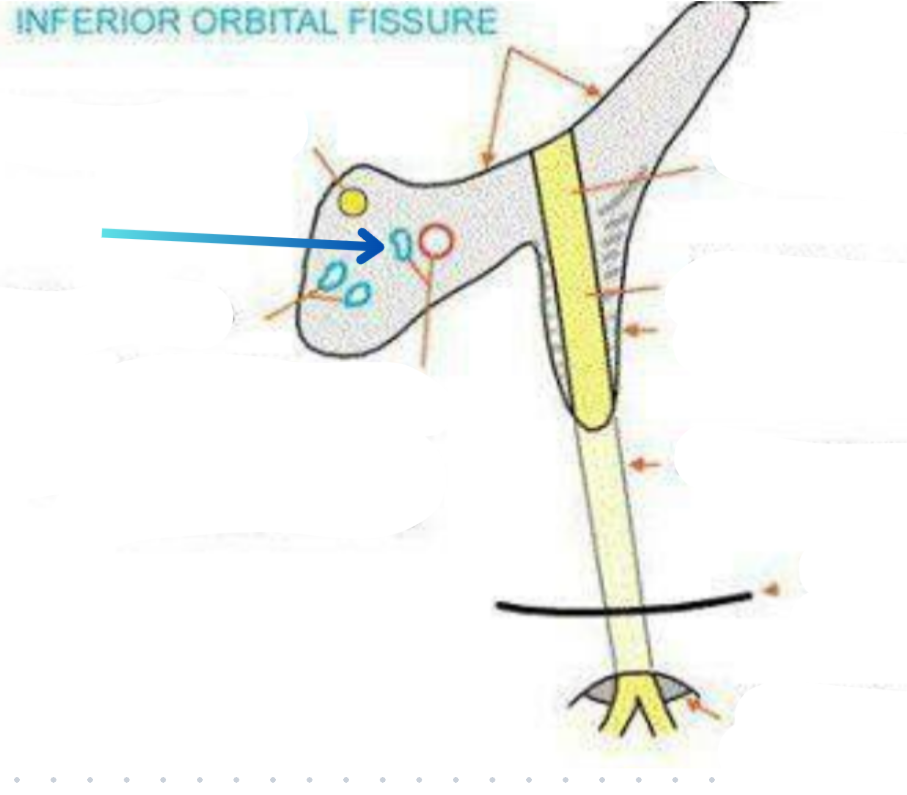
Infraorbital vein
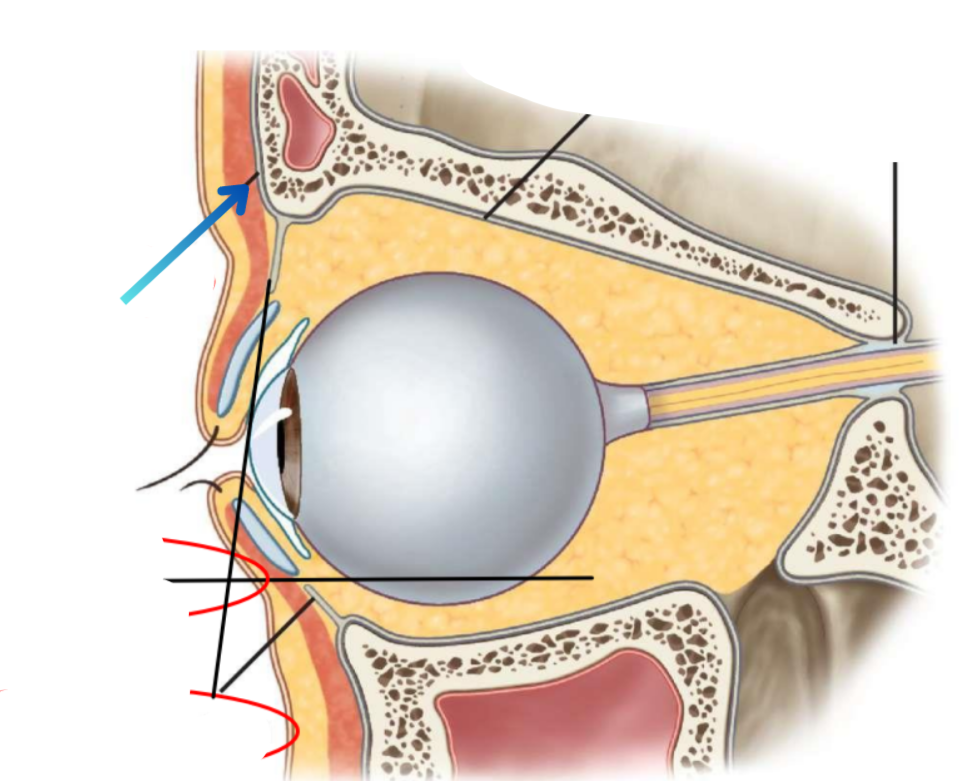
Periosteum
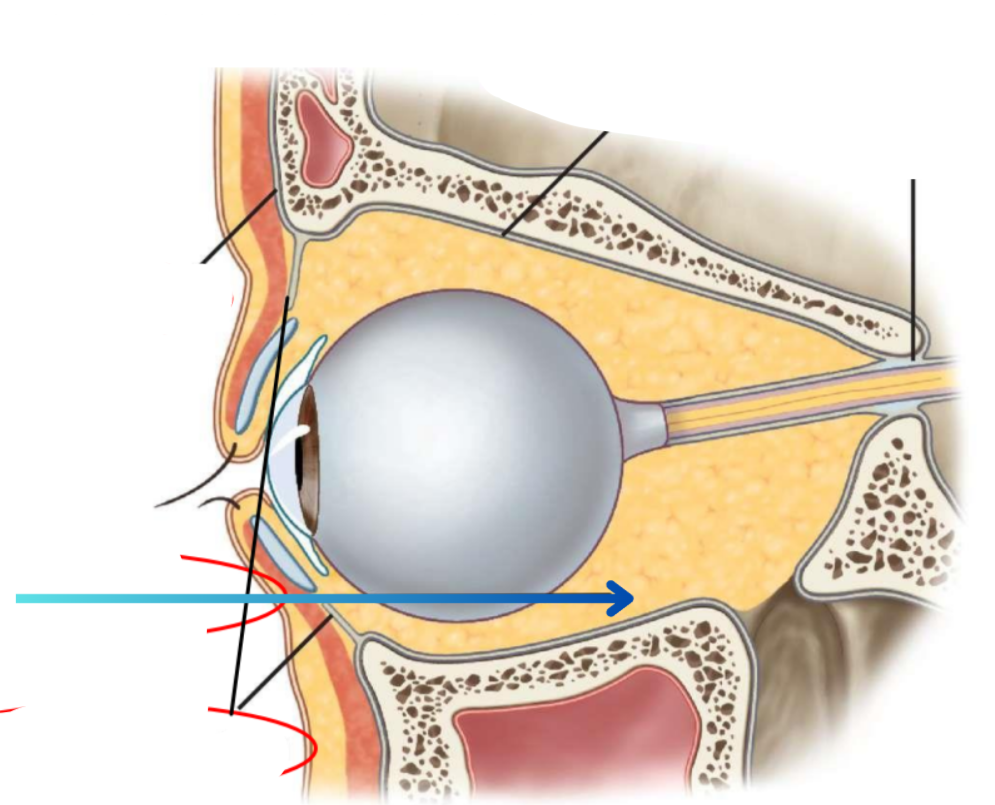
Orbital fat
Spaces not occupied by ocular structures are filled with adipose
Thyroid ophthalmopathy cayses proliferation of orbital fat
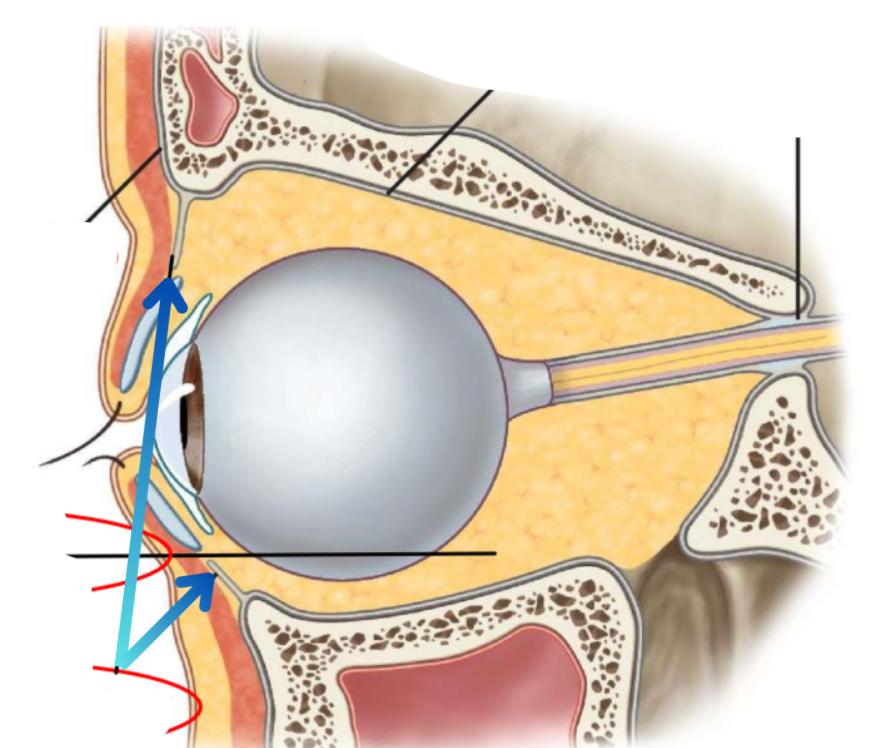
Orbital septum
Continuous with connective tissue at orbital margins
Ends at tarsal plates
Funciton of orbital septum
Helps prevent facial infections from entering the orbit
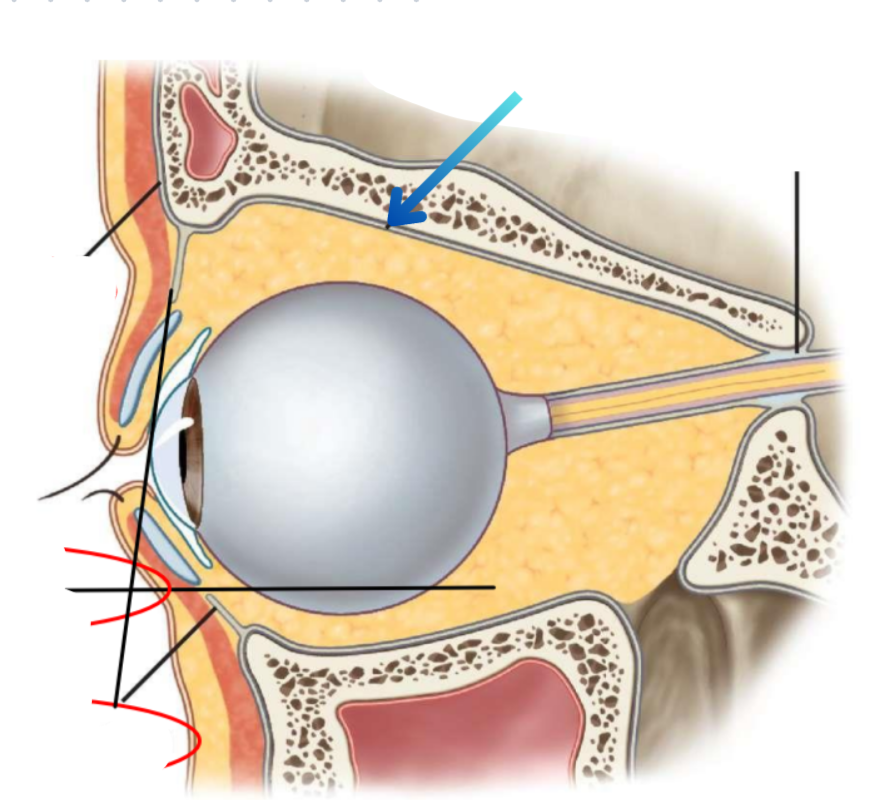
Periorbita
Orbital periosteum
Dense connective tissue
Attachment site for muscles, tendons, and ligaments
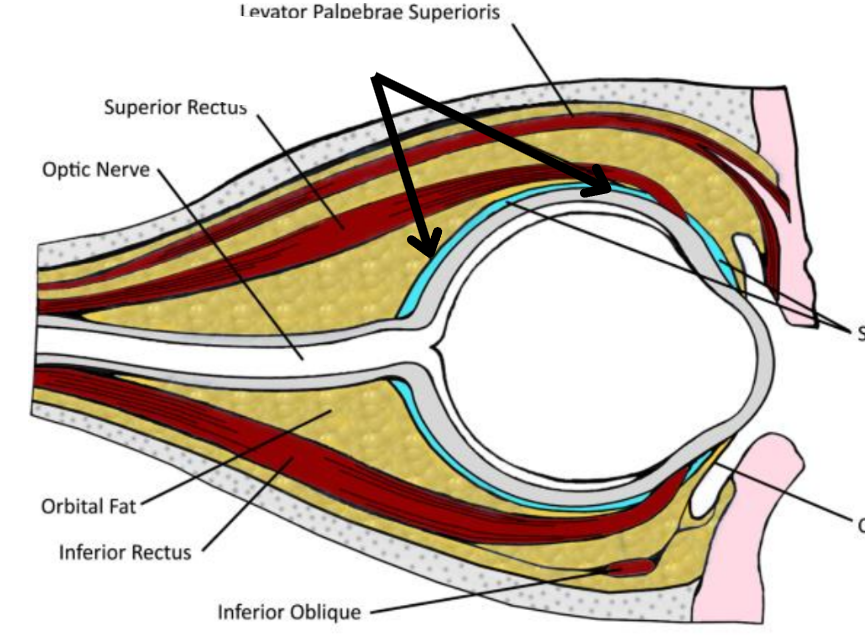
Tenons capsule
Connective tissue
Fuses with optic nerve sheath posteriorly
Fuses with intermuscular septum anteriorly (3mm posterior to the limbus)
Periorbital sinuses
Offer route for the spread of infection
Mucoceles occasionally arise from sinuses and extend into the orbit
Four main paranasal sinuses
Maxillary sinus
Frontal sinus
Ethmoid sinus
Sphenoid sinus
Anullis of zinn
Origin of all vertical + horizontal EOM’s
Origin of superior oblique
Lesser wing of the sphenoid bone
Medial to optic canal (Near frontoethmoid suture)
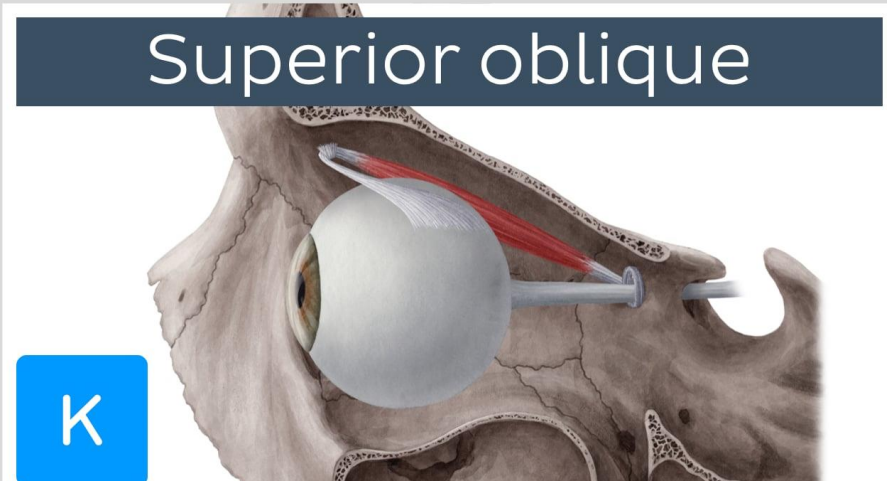
Insertion of superior oblique
On top of the globe behind its equator
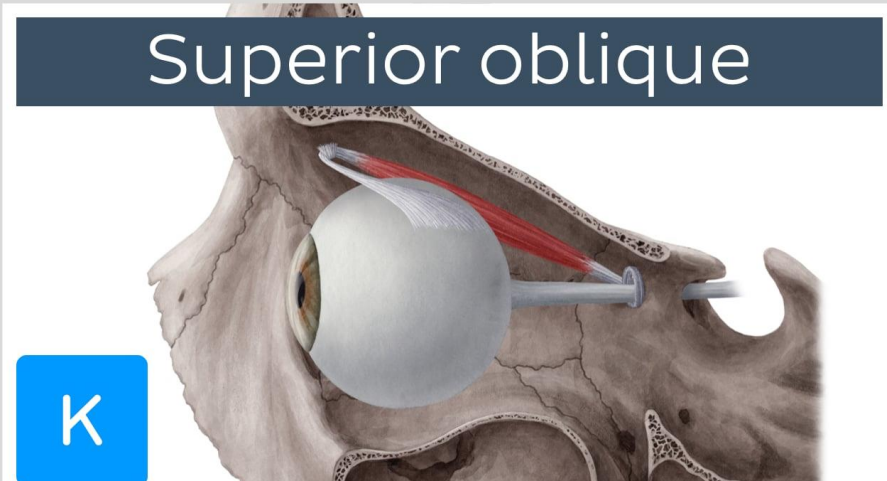
Origin of inferior oblique
Anterior orbit (From maxilary bone)
Only EOM to have its origin in anterior orbit
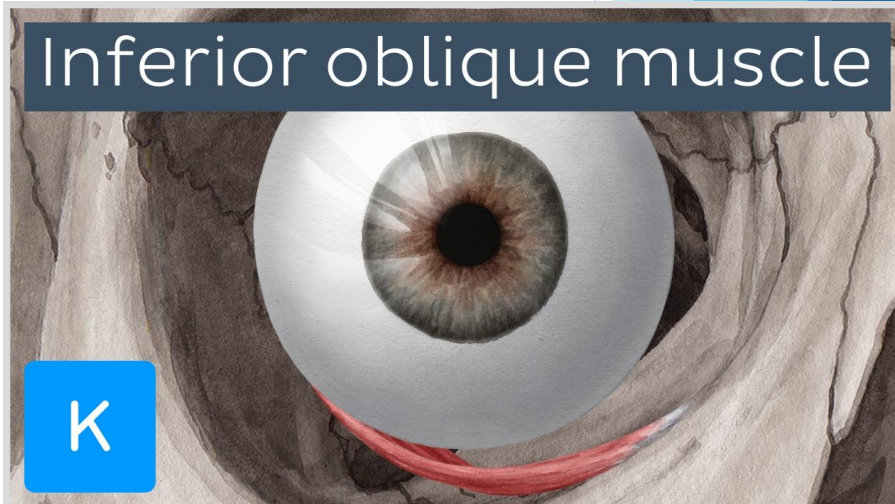
Insertion of inferior oblique
Posterior portion of the globe, laterally
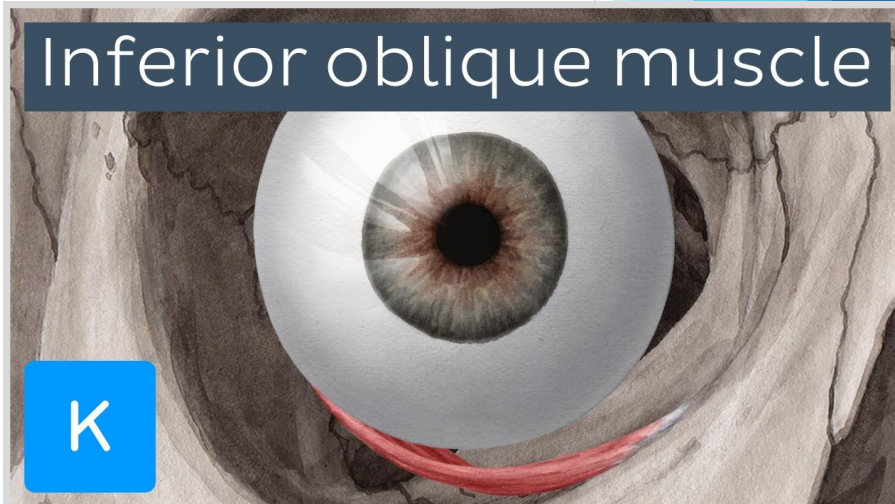
Vertical + Horizontal EOM lengths
Lateral rectus > superior rectus > inferior rectus = medial rectus
Rectus EOM blood supply
Internal carotid artery → Ophthalmic artery → Muscular branches of ophthalmic artery
Muscular artery → Anterior ciliary arteries (Supply anterior part of recti)
External carotid artery → Infraorbital artery (IR and IO region)
Anterior cilliary arteries
Both vertical EOM’s contain 2 ciliary arteries
Medial rectus → 2
Lateral rectus → 1 (Exception)
Superior oblique blood supply
Superior muscular branch of ophthalmic artery
Inferior oblique
Inferior muscular branch of ophthalmic artery
External carotid artery → Infraorbital artery